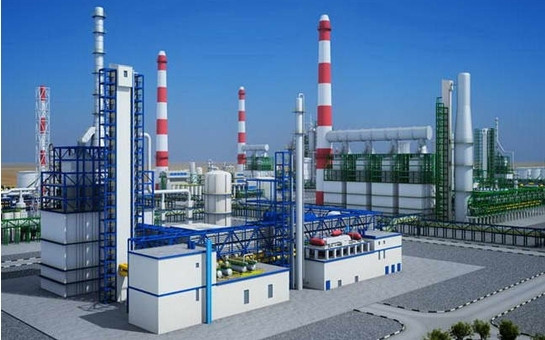
After the restoration of independence in 1991, the Republic of Azerbaijan began to realize its sovereign rights in the economic field and to implement independent policy. The main directions of this policy are the organization of the economic system based on different types of property, transition to the market economy, and integration into the global economy.
Economically, the years after the independence can be divided into two main periods. The period of 1991-1995 was characterized by economic chaos and regression. The period after 1996 is known for an increase in macroeconomic stability and dynamic economic development.
As the result of far-sighted policy and intensive activities of the President of Azerbaijan, the national leader Heydar Aliyev, significant results were achieved in the fields of socio-economic development and integration into the global economic system within a short period of time – in spite of unfavorable initial conditions. The great achievement was that the Azerbaijani model of the state system establishment and development was established over the past period.
At the beginning of economic recovery, the country lacked oil-exporting infrastructure. In order to fill this gap, in 1996 Azerbaijan signed an agreement allowing its oil exports via the Baku-Novorossiysk pipeline. In 1999 the new pipeline Baku-Supsa was put into use; additionally, an agreement on construction of Baku-Tbilisi-Ceyhan, which is currently the major oil-exporting pipeline.

One of the main tasks of the country’s leadership in that period was efficient use and reallocation of the benefits from rich oil and gas endowment. In order to solve this task, in 1999 the national leader Heydar Aliyev adopted the Decree promoting cooperation with international companies in this field. Additionally, in order to channel the revenues from oil exports to the priority sectors of the economy and important social and economic projects, the State Oil Fund was established. At the current moment, international organizations evaluate positively Oil Fund’s activity and its provision of transparency.
The oil-gas sector played a dominant role in developing other sectors of the economy. The considered economic policy led to macroeconomic stability and sustainable economic growth, as the result, reforms started in all economic fields, new measures are taken in order to improve the social welfare of the population.
Developing entrepreneurship, attracting domestic and foreign investment by establishing a favorable business and investment environment, obtaining non-oil sectors’ development had been specific features of implementing economic policy at this stage. As the result of fulfilling expedient measures, the entrepreneurship section was formed and the role of the private sector in social-economic development increased considerably.
Implemented measures in providing diverse forms of property contributed positive effects to sustainable economic growth. However, despite the beginning of privatization specific weight of the private sector in the GDP was less than 10%, currently, the special weight reached 83%.
After maintaining independence as the major priorities of foreign economic policy, the Republic of Azerbaijan formed a relationship with international finance credit and economic institutions. Azerbaijan had been admitted nearly to of all international institutions, including in 1992 IMF, World Bank, EBRD, Islam Development Bank, in 1999 Asian Development Bank.
The main directions and specifications of social-economic policy strategy, which is continued success and improved by the President of the Republic of Azerbaijan, Ilham Aliyev, is to transit to the market economy and to form a social, diversified national economy, which possesses the ability of self-development and to integrate to the world economy.
As the result of the implementation of this policy, obtained successes are strengthened, macroeconomic stability was secured, diversification of the economy, development of non-oil sectors and regions accelerated, efficient usage of strategic international reserves was secured, the stability of national currency and confidence of banking system increased, conservative external debt strategy implemented, support from government to entrepreneurship intensified, social welfare of population improved sustainably.
On the basis of the President of the Republic of Azerbaijan`s decree on 16 March 2016, (No:1897, “About approval of “The main directions of the strategic road map on the national economy and the main sectors of the economy” ) 12 strategic roadmaps for 11 sectors of the national economy developed. Strategic road maps include the strategy of economic development and the actions plan for 2016-2020, long-term view of the period till 2025, and target view of the period after 2025. The document does not only cover the principles and development goals but also, global trends in each direction, 360 degrees diagnostics of the economy and GZIT analysis, measures to be taken, required investment, and outcome indicators. The Strategic Roadmap provides all factors contributing to economic growth, including opportunities for communication and cooperation by local and international private sector representatives. According to the road map, the locomotive of economic development is the private sector, while government investments play a catalyst role. It is especially must be noted that after the approval of the Strategic road map, relevant government agencies have set up their activities on the basis of more detailed programs. Before the implementation of the project, a feasibility assessment is conducted and relevant government agencies are responsible for each initiative.
3-year programs were accomplished in 2004-2018 on the socio-economic development of regions of Azerbaijan by presidential decrees and orders in order to implement comprehensive and sustainable measures aimed at economic diversification.

The execution of tasks of the state program accepted and successfully implemented for the developments of the regions, as well as at the decrees in connection with additional measures for socio-economic development of the regions, gave a stimulus to the stable development of the non-oil sector in the country, increasing of quality of public utilities and social infrastructure in the regions, improvement of the business environment, increasing of investments, the opening of new enterprises and workplaces and as result, employment of the population and decreasing of the poverty level. During the period of implementation of the state programs in 2004-2018 years, GDP increased 3.3 times, while the non-oil sector increased 2.8 times. Also, industry and agriculture increased respectively 2.6 and 1.7 times in Azerbaijan. Meanwhile, more than 2 million new workplaces have been created in the country. 1.5 workplaces were permanent. More than 100,000 institutions were created. Unemployment and poverty rates have fallen to 5 percent and 5.1 percent respectively. On the basis of state programs, large-scale works have done and paved a way for the development of regions in the coming years.
In order to continue the works in the field of socio-economic development of the country`s regions, including rural areas, as well, as to improve infrastructure and social services, increase employment and material well-being, `The State Program on socio-economic development of regions of Azerbaijan Republic in 2019-2023`, is being successfully continued.
Today, Azerbaijan has improved its own quality new economic model, expanding political and trade relations between Europe and Asia, and playing an important role in the implementation of huge projects along with the development of the Caucasus transportation corridor. As a result of the implementation of international projects, Azerbaijan has become an international transportation hub and transportation corridor in the last few years. A large shipyard has been built in our country. The use of the Alat International Sea Trade Port which is the largest in the Caspian Sea, and Baku-Tbilisi-Kars railways is a historic event.
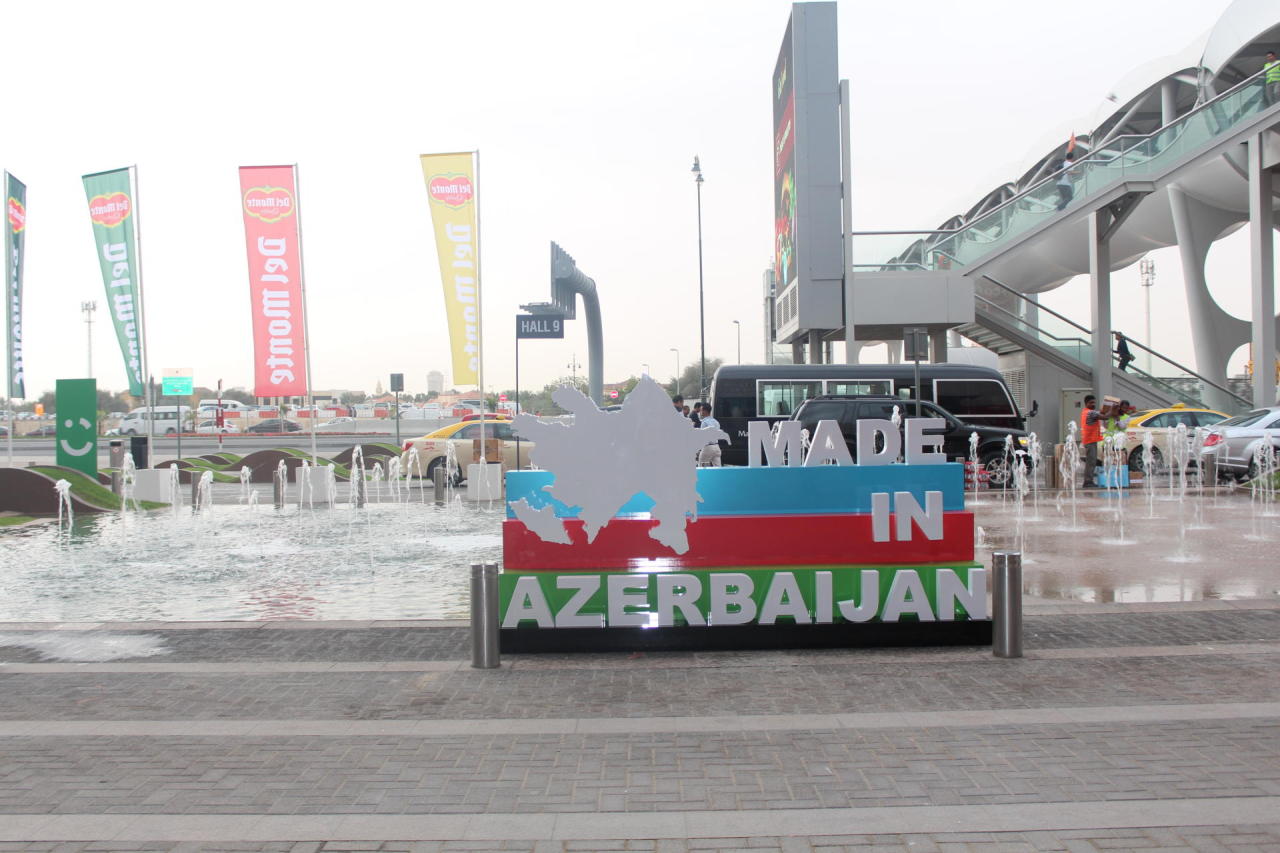
The President of the Republic of Azerbaijan Mr. Ilham Aliyev signed the Decree on the large-scale promotion of local non-oil products in foreign markets as “Made in Azerbaijan” on 5 October 2016. This Decree contains 9 different support mechanisms to stimulate exports and promote “Made in Azerbaijan” abroad. Currently, more than 3,000 varieties of products are exported under the `Made in Azerbaijan` brand.
In order to encourage the export of our country’s competitive products, the number of trading houses is growing abroad. Currently, in order to strengthen their activities, organization work continues.
In recent years, one of the most significant achievements of the Azerbaijan energy sector has been the delivery of the TANAP project to the European border. The TANAP and TAP projects, a key part of 3,500 kilometer-long Southern Gas Corridor connecting several countries, have been successfully completed.
Another important event in the field of energy was the signing of the memorandum of understanding on joint exploration, development, and development of hydrocarbon resources of the Dostluq field in the Caspian Sea between the government of Turkmenistan and the Government of the Republic of Azerbaijan. In terms of the development of our country’s oil and gas strategy, the memorandum of understanding has great importance. This historic event will have a positive impact on the growth of the role of our country as a transit country and contribute to the realization of the Trans-Caspian energy pipeline.
The occupation of about 20 percent of the territory of Azerbaijan for many years has led to economic growth, which has not allowed it to use its potential. The enemy in the Patriotic War 2020 for 44 days restoration of liberated territories after a brilliant victory over them, ensuring further development, the creation of large-scale infrastructure, and the return of the population to their native lands actions are carried out.
Due to the rich economic potential, natural resources, and wide tourist opportunities of all works aimed at ensuring their equal development, through effective implementation on the basis of a single program, the compliance of the territories of the areas liberated from occupation with the revision of the distribution by economic areas is the goal. To this end, President Ilham Aliyev dated July 07, 2021 “on the new division of economic regions in the Republic of Azerbaijan” According to the decree, the Karabakh and East Zangezur economic regions have been created in the territories liberated from occupation.
STRATEGIC ROAD MAPS

Our country has made significant progress in all aspects of national development and distinguished by its flexible approach to the economic realities of the time. After we gained our independence, our country has also experienced a period of crisis stages in a deep and political transformation. Enemy`s aggression and uncertain political situation in the country does not only paralyzed the country`s economy but also, created a threat to Azerbaijan`s national interests. After Heydar Aliyev`s return to political power, the political stability created conditions for the normal functioning of economic institutions and accelerated transition to the market economy. With the `Contract of the century` treaty which is signed in 1994, Azerbaijan gained an important position on the world`s energy map. Thus, the decline in the economy was soon replaced by a dynamic economic development trend.
From 2004 to 2015, an average annual economic growth rate became 10.6 percent, while GDP increased 7.6 times in the country. At the same time, there was a 6.5-time increase in the GDP per capita that caused Azerbaijan to rise from 134th to 79th place among the world countries. International rating agencies and organizations highly evaluated the economic reforms implemented in Azerbaijan and the current economic environment. According to the World Bank’s Doing Business report, Azerbaijan was evaluated as the world`s `leader reformist state` in 2009. As a result of the successful implementation of the oil strategy, the well-being of the population has increased, capital investment in the economy has increased many times, and stability in the macroeconomics achieved. In this regard, up to the present, the path of socio-economic development of Azerbaijan can be considered as adequately successful.
However, since mid-2014, a sharp decline in the world markets` energy prices, economic downturns in foreign-traded countries, and the financial crisis have also had a negative impact on Azerbaijan. The flow of foreign currency into the country decreased significantly. This tendency created a significant difference in the country`s import-export balance. The sustainable economic growth in recent years become to slow down, and it led to the transition of new economic model`s implementation in our country. Under such a circumstance, Azerbaijan Republic`s President Ilham Aliyev initiated the development of a new economic strategy and relevant institutional reforms.
In this regard, according to the “Strategic Road Maps for National Economy and Main Economic Sectors” signed by the President of the Azerbaijan Republic Mr. Ilham Aliyev, over the national economy and economy`s 11 sectors, the preparation of 12 strategic road maps plays a significant role.
Here is a list of the 12 strategic road maps which contribute to the development of the national economy:
“The strategic road map on the prospect of the national economy of the Azerbaijan Republic”;
“The strategic road map concerning the development of the oil and gas industry in the Azerbaijan Republic”;
“The strategic road map concerning production and conversion of agricultural products in the Azerbaijan Republic”;
“The strategic road map concerning the production of consumer goods at the level of small and medium business in the Azerbaijan Republic”;
“The strategic road map concerning the development of the heavy industry and mechanical engineering in the Azerbaijan Republic”;
“The strategic road map concerning the development of the industry of specialized tourism in the Azerbaijan Republic”;
“The strategic road map concerning the development of logistics and trade in the Azerbaijan Republic”;
“The strategic road map concerning the development of the provision of housing in reasonable price in the Azerbaijan Republic”;
“The strategic road map concerning the development of professional education and training in the Azerbaijan Republic”;
“The strategic road map concerning the development of financial services in the Azerbaijan Republic”;
“The strategic road map concerning the development of telecommunication and information technologies in the Azerbaijan Republic”;
“The strategic road map concerning the development of utilities (electrical and heat energy, water, and gas) in the Azerbaijan Republic”.
Strategic Road Map on National Economic Perspectives covers short, medium, and long-term horizon and comprises economic development concept and action plan until 2020, long-term outlook by 2025, and target outlook for the period after 2025. It does not only covers economic objectives and principles, but also, global trends for each area, 360-degree diagnostics of the economy, SWOT analysis of the current situation, actions to be undertaken, required investments, and indicators as well.
This map considers the contribution of all economic-social development factors, includes great opportunities for the extensive cooperation of local and international private sector representatives. Government investments play a catalyst role and the private sector emerges as the locomotive of economic development.
In order to achieve sustainable economic growth, the strategic roadmap identifies four strategic goals:
1) Ensuring fiscal sustainability and formulating monetary policy;
2) Privatization and reforms related to state-owned enterprises;
3) The development of human capital;
4) Further improvement of the business environment.
By implementing these four strategic goals, the national economy will strengthen and diversify, and transparent management and control system will establish.
Reducing the country`s dependence on energy carriers, economic diversification, and integration into the world economy are the priority goals of the `Strategic Road Map`s Action Plan` for 2020. These arrangements which are connected with each other paved a way to restructure the country`s economy comprehensively.
The goals set within the frames of a long-term vision in the `Strategic Road Map` until 2025 aims to strengthen the competitiveness of the country’s economy, By achieving this goal, the establishment of a free competitive environment in the country, increasing the private sector`s share in the economy, and enhancing the economy`s investment attractiveness plays a significant role. Azerbaijan is evaluated as one of the most stable countries in the world by the world`s leading financial institutions in terms of its macroeconomic environment. However, a sharp decline in oil prices threatens our country`s macroeconomic stability. In this regard, achieving macroeconomic stability again in the medium-term target is one of the key goals for the successful implementation of the responsibilities ahead.
The Strategic Roadmap defines the establishment of a strong, diversified, inclusive economy that ensures improved social welfare for the country’s citizens and higher the human development index as a post-2025 target view. Improving the living standards of the country`s population and developing human capital are the key components of long-term targets.
The availability of significant oil and gas reserves in Azerbaijan is the fortune of our people and the major factor in the development of the country for the welfare of the people and their present and future.
Heydar Aliyev
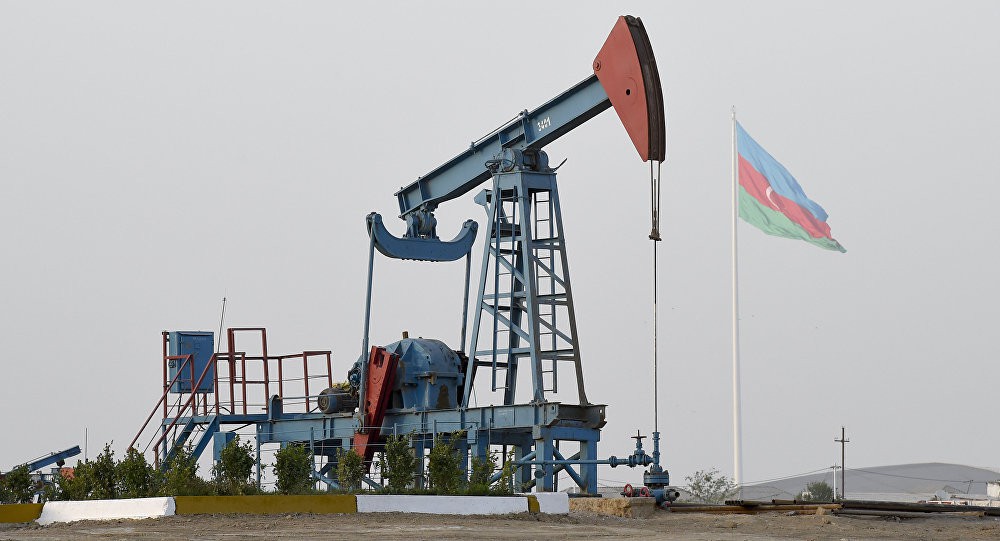
Azerbaijan which is famous as the oil country in the entire world initiated the industrial production of oil in the middle of the 19th century. The oil fountain in the Bibiheybat field of Baku in 1848 laid the foundation for the first industrial production of “the black gold” in Azerbaijan. Azerbaijan took first place in the production and processing of oil in 1899 and accounted for 50% of the global oil production.
Beginning from the 1870s the foreign capital started to flow into the country. The development of the oil industry bred a new generation of local entrepreneurs. Hadjy Zeynalabdin Tagiyev, Musa Naghiyev, Shamsi Asadullayev turned into famous oil entrepreneurs owing to their skills, talent, industriousness, and undertook great work for the welfare of the people and the nation of the country.
Azerbaijan accounted for 75% of the oil produced in the Soviet Union during the Second World War thus providing the front with the fuel made a great contribution to the victory over fascism.
The fountain struck on the Neft Dashlary considered the rare field 100 kilometers away from Baku in 1949 opened a new stage in the production of offshore oil. Azerbaijan started to produce oil in the offshore fields at that time.
The 1970-1980s entered history as the period of great achievements of the Azerbaijani oil industry and the strengthening of its material and technical basis as well as its development. The progress of the said sphere within that period of time is closely connected with Heydar Aliyev who ruled Azerbaijan.

These years were also characterized by the development of the deeper regions of the sea by Azerbaijani oilmen. As the result of the purposeful measures conducted at that time, the oil industry strengthened, and its wide infrastructure was established. Azerbaijan was supplied with different drilling plants for the development of offshore fields, special boats, techniques, and equipment to ensure the offshore construction works, and such strategically important production plant as the plant of the deep sea basis of Baku was established. Moreover, great progress was also observed in the oil processing, petrochemical industry, and oil mechanical engineering.
The rapid arrangement and realization of geological surveys in the Caspian Sea in the early 1970s were also connected with Heydar Aliyev. To date, it is possible to say that the works carried out by the national leader of the Azerbaijani people in all spheres including the oil sector constituted his farsighted plans-`the contract of the century and the intention to improve the living standards and to ensure the independence of the people.
Within the first years of independence, the increase of gas and oil production was regarded as one of the major means for the elimination of economic and social troubles. Under such conditions, the limited financial funds required the participation of foreign companies and investors. Yet, the oil companies of the West hesitated to invest in Azerbaijan due to the Armenians’ intervention in Azerbaijan as well as the turmoil, inner differences, and instability. At the same time, the economic interests of Azerbaijan were not ensured by any of the conducted talks.
The talks initiated with the interested foreign oil companies in the 1980s were nearing their end in the spring of 1993. At that period Azerbaijan was close to the signing of a contract that not only neglected the interests of the people but also would strike a hard blow on the economics of the country through plundering the valuable natural reserves of the country.
Heydar Aliyev’s return to the government in 1993 by the will and request of the people laid the foundation for the dramatic changes in the political and economic life of Azerbaijan.
The discussions and talks on the oil contract were in fact resumed and at last following the hard process of negotiations, the country agreed on such provisions of the contract that would fully correspond to the interests of Azerbaijan.
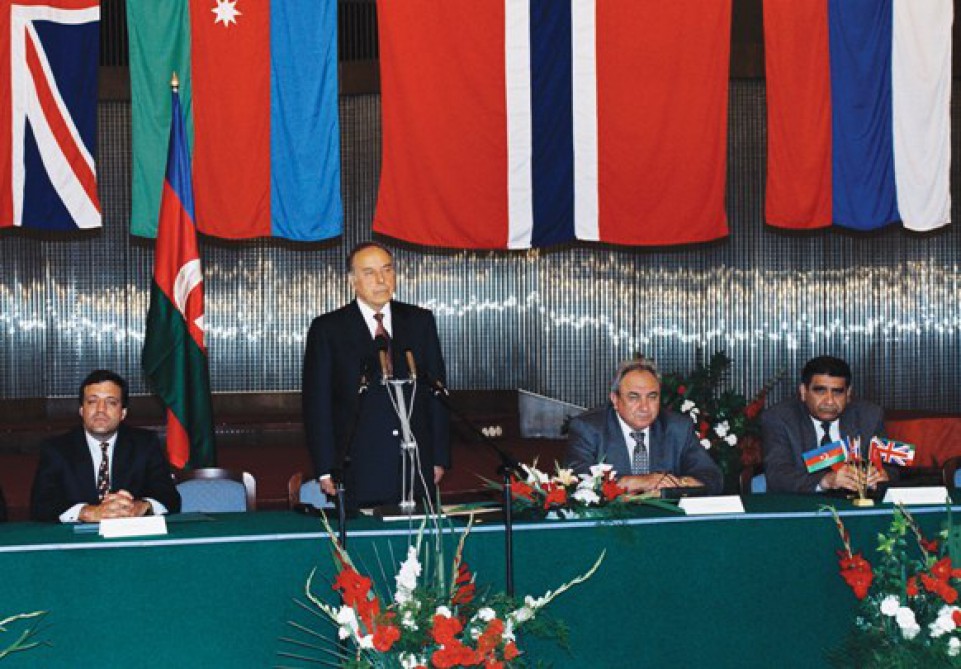
The oil contract signed with the oil companies of the West in Gulistan palace of Baku on September 20, 1994, opened a new page in the history of the country. Later, the said contract called the contract of the century was perpetrated in the oil chronicle of independent Azerbaijan
On September 20, 1994, under the leadership of national leader Heydar Aliyev, an agreement on exploration, development, and production sharing was signed with13 oil companies representing eight countries of the world covered three major oil fields in the Azerbaijan sector of the Caspian Sea – Azeri, Chirag and Deepwater portion of the Gunashli field. With this agreement, Azerbaijan started to shine in the world. In the next years, 41 oil companies representing 19 countries of the world signed 32 agreements with Azerbaijan.
In order to ensure the revenues from the joint development of the oil fields and direct them to the economic and social development of the country, The State Oil Fund was established in 1999. Social and economic developments were one of the main aspects of government policy.
After the signing of the `contract of the century, it was quite controversial and difficult to export millions of tons of crude oil to the world market completely safe in terms of economic and political situations. However, thanks to the principal and decisive position of our great leader, Heydar Aliyev, his diplomatic skills and ability to convince the partners, routes of transportation of Azerbaijani oil created. In January 1996, the intergovernmental agreement on transporting Azerbaijani oil via the Baku-Novorossiysk pipeline signed between the Republic of Azerbaijan and the Russian Federation. In October 1997, this line came into use. In 1997, the Azerbaijani and Georgian governments signed an agreement on the transportation of oil into the Black Sea with the Baku-Tbilisi-Supsa route. On April 17, 1999, another important event took place in the history of the country. With the participation of the Presidents of Azerbaijan, Georgia, and Ukraine has inaugurated the Baku-Supsa oil pipeline as well as the Supsa export terminal on the Black Sea coast of Georgia. This line is 850 km long and has an annual output of 5 million tons.
Which country`s territory will be a transition of the main export oil pipeline? It was a controversial issue that could not find its solution. Finally, in November 1999, during the OSCE’s Istanbul meeting, the Presidents of the United States, Turkey, Azerbaijan, Georgia, and Kazakhstan signed an intergovernmental agreement on the construction of the Baku-Tbilisi-Ceyhan Main Export Oil Pipeline.

Construction of the Baku-Tbilisi-Erzurum gas pipeline and the start of the gas production from the Shah Deniz field was a historical event such as the Baku-Tbilisi-Ceyhan oil pipeline. Today, Azerbaijan is a country that not only exports oil but also, exports gas as a logical consequence of this project.
In November 2006, the President of the Republic of Azerbaijan, Mr. Ilham Aliyev, became one of the European Union’s closest partners in the field of “Azerbaijan and Security”.
Our country started to play a crucial role in the world`s energy market with the launch of the Baku-Tbilisi-Ceyhan oil pipeline and Baku-Tbilisi-Erzurum gas pipeline in 2006 and 2007 respectively.
Exploring the `Umid field` in the gas field in 2010 was one of the most important events in the oil and gas industry in Azerbaijan. Another great achievement was the determination of the reserves in the Absheron field. Absheron field contains probably 350 billion cubic meters of gas. With the discovery of this field, Azerbaijan`s gas reserves reached 2 trillion 550 billion cubic meters.
On the 20th anniversary of the Contract of the Century, the foundation of the Southern Gas Corridor project was laid at the Sangachal terminal in September 2014.
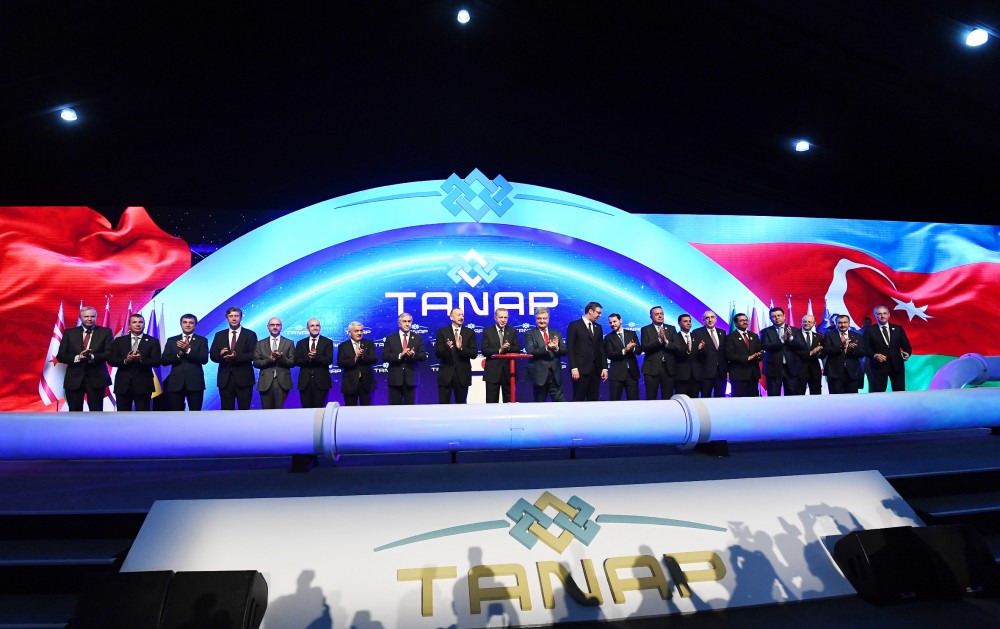
Over the exportation of Azerbaijani gas to the world market, extensive work has been completed. In order to ensure the operation of the Southern Gas Corridor, large-scale development of the Shah Deniz gas condensate field, expansion of the Southern Caucasus Pipeline (SCP), Trans-Anatolian Pipeline (TANAP), and Trans-Adriatic Pipeline (TAP) has been completed.
On the 23rd anniversary of the Contract of the Century, the agreement signed on amendments on the production sharing and development of the Azeri-Chirag-Guneshli block in Baku in September 2017. According to this regulated agreement, the duration of the `Contract of the Century` extended until 2050.
In 2021, the Memorandum of Understanding on joint exploration and development of hydrocarbon resources of the Dostlug (Friendship) field in the Caspian Sea between Azerbaijan and Turkmenistan is a historical event. With this historical event, Azerbaijan will be a transit country. Also. this agreement will contribute to the realization of the Trans-Caspian energy pipeline.
New Oil Strategy`s achievements have become a dynamic economic development of the Azerbaijani state over time. In other words, The new oil strategy achieved its main goal by ensuring the country`s energy security and proportional economic development.
HISTORY OF DEVELOPMENT OF OIL INDUSTRY
Azerbaijan and the Baku oil attracted the attention of the world companies and businessmen in the second half of the 19th and early 20th centuries and a number of foreign companies successfully operated there and ensured the production of oil.
Heydar Aliyev.

The history of the oil industry of Azerbaijan dates back to the ancient period. Arabian historian, geographer, and traveler Ahmed Al-Belaruri pointed out the reliance of the economics of Absheron on oil in the ancient times, while Abu-Ishag Istekhri (11-10th centuries), Abu -d-Gasan Ali Masudi (the 10th century) provided information on the oil lands of Baku and white and black oil of Absheron. Italian traveler Marko Polo (the 13-14th centuries) reported on the incomes from the transportation of Baku oil to Eastern countries, German diplomat and traveler Adam Oleari (the 17th century — from Baku oil wells and Turkish Evliya Chelebi (the 17th century) — from oil fields and transportation of oil to Iran, Central Asia, and Turkey. The manuscript discovered on one of the oil wells in Balakhany (in the depth of 35 meters) showed that it was dug and commissioned by Allahyar Mamedhur in 1594. According to Amin Ahmed Razi (Iran 1601), nearly 500 similar oil wells existed in Baku in the early 16th century both white and black oil was produced in such wells. German traveler, doctor, and naturalist Engelbert Kempfer visited Balakhany, Binegedi, and Surakhany fields of the Absheron peninsula in 1683 as the secretary of Sweden’s embassy and depicted the transportation of oil from the Absheron peninsula to Iran, Central Asia, and North Caucasus. Baku resident Gasymbey Mansurbeyov ordered the digging of two offshore wells 18 and 30 kilometers away from the shore in 1803 (1798).
The history of the development of the Azerbaijani oil industry is divided into several stages which had each their own peculiarities.
The first stage started with the mechanical production of oil from the dug wells in 1847 and continued up to 1920. The years of 1847-1848 were characterized by the first production of industrial oil from the dug wells in Bibieybat and later Balakhany fields and the development of the oil industry of Azerbaijan started from that moment.
The early 19th century was characterized by the first production of oil from the manual well dug at Bibieybat 30 meters away from the seashore.
The first oil refinery was constructed in Baku in 1859. The kerosene plant was built by Djavad Melikov in Baku in 1863 and fridges were used in oil refining for the first time in the world. 15 oil refineries operated in 1867.
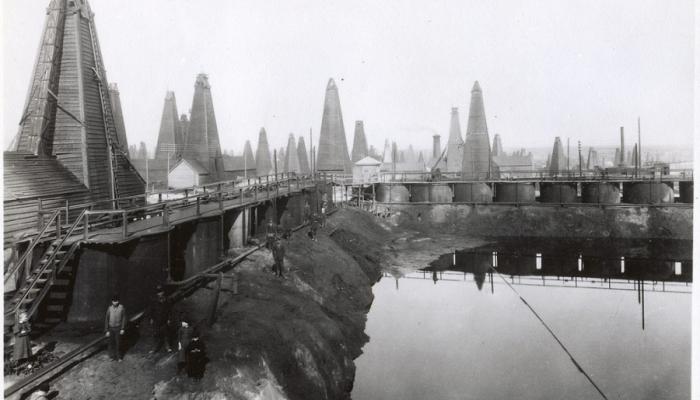
The development of well drilling technologies led to the discovery of a number of oil wells (Binegedi, Pirallahi, Surakhany, and others), the increase in the production of oil, the development of oil infrastructure and oil refining, and the creation of hundreds of companies engaged in oil production, refining and sales. The national bourgeoisie formed in Azerbaijan and Baku turned into one of the industrial centers of the world. The industrial method of oil production was first used in the Balakhany-Sabunchun-Romany oil field in the Absheron peninsula in 1871. Two laws “On the excise tax on oil wells and oil products” and “Sales of oil lands held by leaseholders to individuals were adopted for the improvement of the relations in the oil industry in 1872. 15 regions of Balakhany and 2 regions in Bibiehbat were first put on auction on December 31, 1872.
At that period the state unused lands were commissioned for 24 years for the exploration of oil and the development of new oil fields. The leaseholders had the right to export the oil they produced and to fix its price. Their net incomes made up 14-15% of the oil sold. The net capital invested into the oil industry accounted for only 4% of the whole investments in the 1870s. The volume of mixed capital with the participation of national capital made up nearly 10%. In the late 19th century 49 (24.8%) out of 167 entrepreneurs operating in the oil sector were Azerbaijanis. At that period the oil millionaires made a great contribution to the development of the oil industry (Hadjy Zeynalabdin Taghiyev, Isa bey Hadjinsky, Murtuz Mukhtarov, Shamsi Asadullayev, Seyid Mirbabayev, and others). The first stock oil company -Baku oil society was established in Baku in 1874. Swedish Nobel brothers arrived in Baku in 1873 and witnessed the economic growth connected with oil. At that period they owned a number of oil fields, oil refineries, oil tankers in the Caspian Sea, barges, railroads hotels, etc. The new oil refineries were constructed and commissioned in 1876 following the elimination of excise tax on oil products.
The first oil pipeline in Russia extending to 12 kilometers and communicating the Balakhany field with the Baku oil refinery was constructed in 1878. The total length of all pipelines communicating the Baku oil refineries with oil fields amounted to 230 kilometers in 1898. These pipelines transported 1 million tons of oil a year.

Baku-Batumi railway was constructed and commissioned in 1883. This fact played an important role in the export of oil and oil products to European states. Rothschild initiated financial and credit transactions in Baku and engaged in the sales of oil in 1883. The Caspian-Black Sea oil company of Rothschild was established in 1886. The bank of Rothschild controlled 42% of Baku oil export. Azerbaijan produced 11 million tons of oil in 1901 thus accounting for over 50% of the world’s production of oil. Famous scientist D. I. Mendeleyev proposed the construction of the Baku-Batumi pipeline to ensure the transportation of Baku oil to the world market in 1880. The pipeline 200 mm in diameters extends to 833 kilometers. Its construction was initiated in 1897 and completed in 1907.
Azerbaijan had accounted for 109 stock companies before the nationalization of the oil industry in the country. Of them, 72 were of Russian capital (240 million rubles) and 37 of English capital (100 million pounds). Nobel brothers invested 30 million rubles in the oil industry in Azerbaijan. The oil company Hadjy-Cheleken owned by the richest oil entrepreneurs of that time Isa bey Hadjinsky invested 1.25 million pounds into the oil industry. Before the nationalization of the oil industry, Azerbaijan accounted for 270 oil-producing enterprises, 49 middle and small firms engaged in the digging of oil wells, 25 firms engaged in oil refining, over 100 mechanical departments, repair workshops, and others. Within the last period of that stage, oil industry experiences a hard situation (war, revolution, and others), and oil production declined

The second stage started in 1920 after the nationalization of the oil industry of Azerbaijan and covers the period offshore Neft Dashlary field in 1949. The production of oil reduced down to 2.4 million tons in 1921. Within the second stage due to the expansion of exploration works a number of new oil fields were discovered (especially Gala, Buzovna-Mashtagha, and others) and commissioned and the oil production reached the level of 23.6 million tons in 1941 thus making up 76% of the total volume of oil production in the USSR. Due to that S.A Vezirov (chief of Azerneftcombinat), R.H. Ismayilov (chief of association Azneftzavodlar), B.Q. Babazade (head geologist of Azizbeyneft), R. Ragimov (master of drilling), were the first oilmen attached to the title of the Heroes of Socialist Labor. Due to the removal of oil equipment and oil specialists to eastern regions (Tatarstan, Turkmenistan, Bashkiria, and others) in the period of the war of 1941-1945 Azerbaijan accounted for 11.1 million tons of oil production.
Well, No:1 942 meters in depth was commissioned to produce 100 tons of oil a day in Neft Dashlary on November 7, 1949, thus laying the foundation for offshore oil production. Agha Gurban Aliyev was the first geologist for the well.
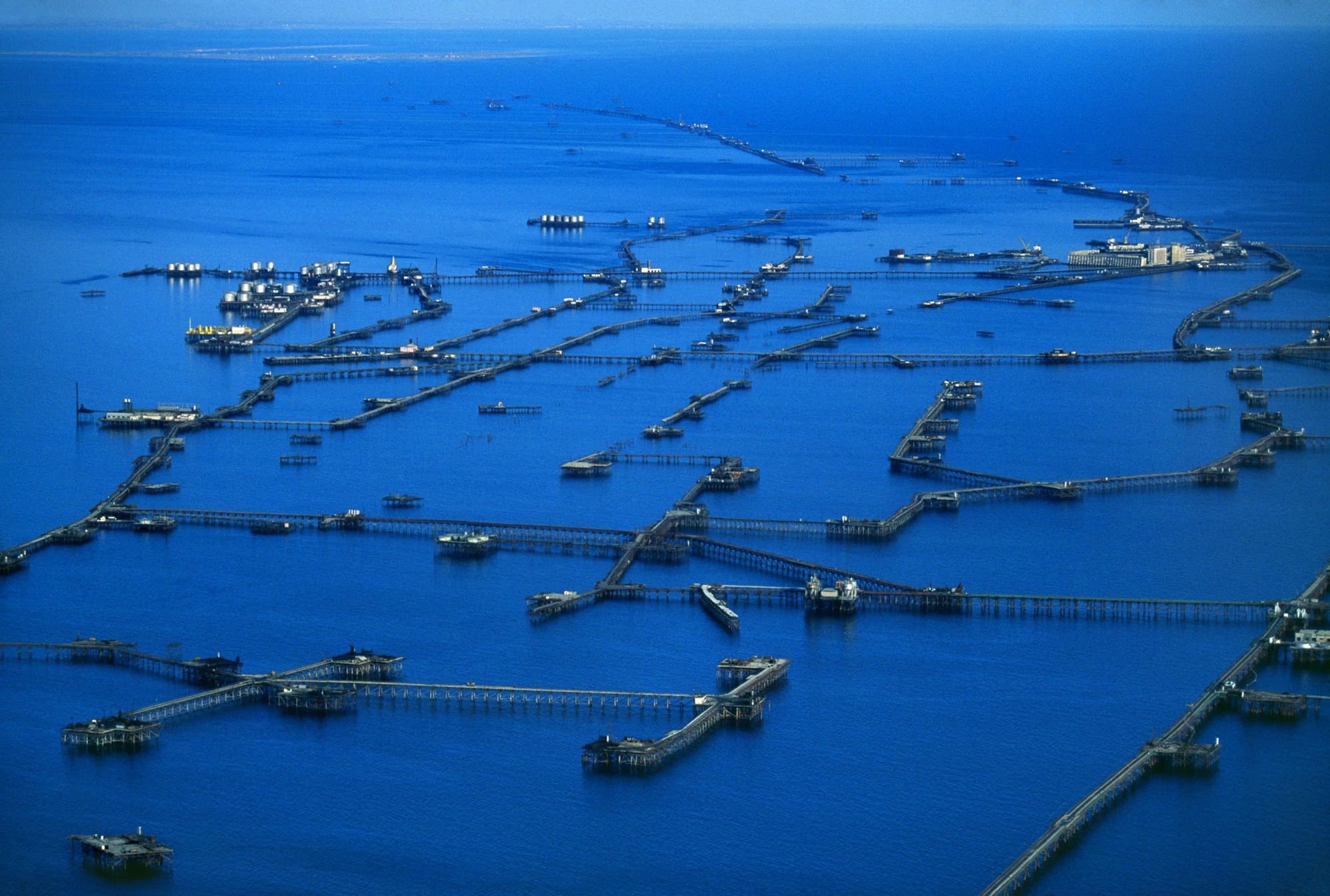
The third stage started with the commissioning of the Neft Dashlary field in 1950 and the development of the offshore oil industry in Azerbaijan and continued up to 1969. During this stage the offshore exploration works expanded, a number of oil and gas fields were revealed and commissioned (Gum-Deniz, Sangachal-Divanni-Deniz-Khara-Zira island, Bulla-Deniz, Darwin pitcher, and offshore drilling (including exploration drilling), the technique and technology of hydrotechnological oil plants, and the infrastructure of offshore oil production developed.
During the said stage a number of new onshore oil and gas fields were discovered and commissioned (Kurovdagh, Mishovdagh, Kursanga, Garabaghly, Galmaz, Garadagh, and others). That time was characterized by the intensive development and operation of Neft Dashlary and other fields. An offshore field was established on the Estacada in the open sea for the first time in the world practice. The conduction of engineering and scientific and technical measures caused the inflow of capital to the country, the improvement of productivity through the saving of metals, and the decline in the prices for a ton of oil.
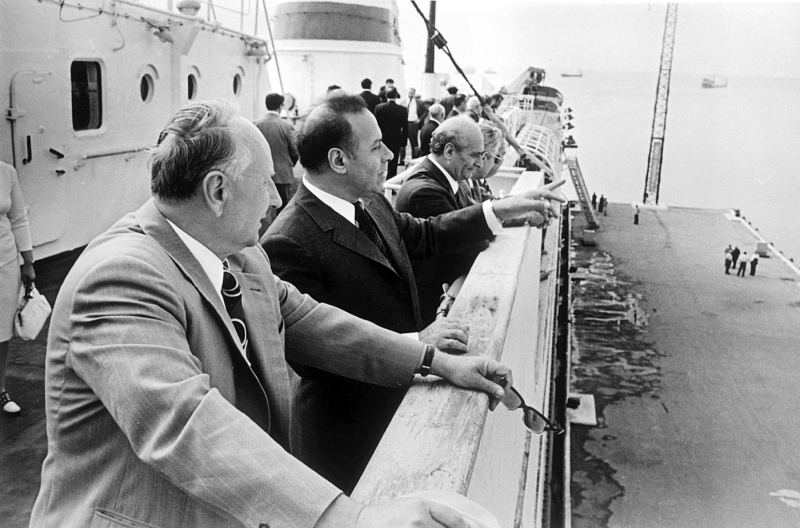
The fourth stage started in 1969 and is characterized by the rapid development of the oil and gas industry that dates back to the first period of Heydar Aliyev’s government. A new stage commenced in the development of offshore oil production at that time. The association Khazardenizneft was established in 1970 and considering the experience of oilmen of Azerbaijan in the conduction of works in the sea the Ministry of Oil Industry of the USSR empowered the Azeri oilmen to carry out all the geological, drilling, operating, and other works in all the sectors of the Caspian Sea (the Caspian Sea was divided into sector).
The technical devices used in the Caspian Sea allowed working only on the depth of 40 meters. Almost all of the oil and gas fields were discovered in the Caspian Azeri sector at the depth of 40 meters at that time. The increase in the oil and gas production in the sea was due to the availability of greater oil and gas reserves in the lower depths. As the result of the policy of the national leader of the Azerbaijani people, Heydar Aliyev Azerbaijan was supplied with over 400 of 75 types of load-lifting boats, seismic, passenger, and other vessels in the 1970-1980s. A crane boat Azerbaijan with a capacity of 2500 tons started operating in the Caspian Sea. Moreover, the receipt of the Khazar type tip-up for the conduction of geological survey on the depth of 70 meters in the sea and the Shelf type drilling plants enabling to operate in the depth of 200 meters in the sea allowed exploring oil and gas fields in the deeper regions o the sea. As the result 8 new oil and gas fields were discovered in the late 1960s, the volume of oil reserves increased by 2, gas reserves by 3. The total production of oil and gas reached 27.1 million tons (standard fuel) in 1975. The number of drilling plants reached 11 in the 1980s and as the result of their operation, the fields rich in oil were discovered ( Azeri-Chirag-Gunashli) in the Azeri sector of the Caspian Sea at the depth of 80-350 meters.
At that time the construction of the unrivaled Plan of the Deep Sea basis in Baku, the allotment of USD 450 million in the Soviet Union for the purpose, and receipt of the license for the construction of this plant in Astrakhan were all due to the courage of late President Heydar Aliyev.
The fifth stage is characterized by the collapse of the USSR, the creation of the new oil strategy covering the period of independence, and the new history of Azerbaijan.
GENERAL CONCEPT OF HEYDAR ALIYEV’S OIL STRATEGY
Azerbaijan has been implementing the new oil strategy since 1994, and the major principles of these strategies imply the effective utilization of the rich natural resources of Azerbaijan including oil, and gas resources.
Heydar Aliyev
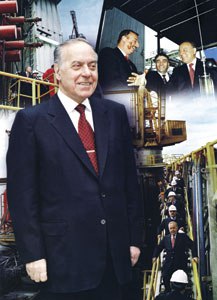
Following the elections of the national leader of the Azerbaijani people, Heydar Aliyev as the leader of Azerbaijan in 1969 deep changes occurred in the socio-economic as well as other spheres of life. Beginning from 1969 the national economy of Azerbaijan was characterized by the dynamic growth of the oil and gas industry. At that period a new stage started in the history of Azeri oil and gas industry development.
A magnificent ceremony was held in Azerbaijan with the participation of the great leader Heydar Aliyev to celebrate the production of 1 billion tons of oil in 1971. As the result of the great policy conducted by President Heydar Aliyev Azerbaijan was supplied with 400 of 75 types of crane vessels, load-lifting boats, seismic, passenger, and other boats in the 1970-1980s. The receipt of Azerbaijan crane with the capacity of 2500 tons, Khazar type tin-up and later the Shelf type allowing working in the depth of 200 meters promoted the discovery of new rich deep-sea oil and gas fields. As the result, 8 new oil and gas fields were discovered and the oil reserves expanded by 2 and gas reserves by 3 in the late 1960s. The total volume of oil and gas production reached 27.1 million tons (of standard fuel) in 1975. The number of drilling plants rose up to 11 in the 1980s and as the result of their operation, a new field rich in oil was discovered at the depth of 80-350 meters in the Caspian Azeri sector (Guneshli, Chirag, Azeri, and others).
A special program for oil processing in Azerbaijan was developed and implemented by the initiative and under the coordination of the prominent politician Heydar Aliyev. The new plants equipped with modern technique and technology were established and new installations were established in accordance with the said program. At the same time, the reconstruction of the oil refineries was initiated. With the implementation of the stages of the reconstruction plan of the oil refining industry in Azerbaijan, the changes occurring in the said sphere deepened and expanded. Thus, the construction of ELVOU-AVT-6 plant in 1976, Catalytic Reforming in 1980, Oil coxing in 1986, and Catalytic Cracking in 1993, other works he carried out during the Soviet times and the strong foundation he created promoted the formation of oil industry corresponding to the world standards in independent Azerbaijan.
The allotment of USD 450 million in the Soviet Union for the construction of the unrivaled Plant of Deep Sea Basis of Azerbaijan, the receipt of license from Moscow for the construction of the plant in Astrakhan was the result of the wise policy of Heydar Aliyev. The construction of the plant was initiated in 1978 and it was commissioned in 1989.
All these facts were due to the wise and farsighted policy of Heydar Aliyev. He realized perfectly that all the conducted works would serve the economic independence of Azerbaijan that would gain independence in the future. History proves the correctness of Heydar Aliyev’s considerations.

Azerbaijan faced a number of problems after gaining independence in the early 1990s. The cut off of the economic relations between the former USSR and Azerbaijan, the instability established in the country, the lack of financial and technical provisions caused a deep crisis in the oil and gas industry. All those difficulties, as well as technical, financial, and other problems, hindered the development of such discovered fields as Azeri, Chirag, Guneshli. In such conditions, Heydar Aliyev who returned to Azerbaijan at the request of the people stood with the slogan “Oil is the national wealth of Azerbaijan” and engaged in the development and restoration of the country’s oil industry. It was necessary to choose between two variants for the settlement of the hard situation established in the oil industry and the development of hydrocarbon reserves of the country: either to wait for the improvement of the financial and economic state of the country for 15-20 years or to attract foreign oil companies to the country. The national leader of the Azerbaijani people decided on attracting large oil companies to Azerbaijan and a new oil strategy was developed in a short period of time. The negotiations with the foreign companies on the development of Azeri-Chirag-Guneshli fields were initiated by the decree of the President of Azerbaijan at that time. Heydar Aliyev who averted the disaster in the country initiated measures for the economic development of the country. Ilham Aliyev, the vice president of the SOCAR, was involved in the process of negotiations from the very beginning and was the most active participant in the successfully conducted process. The Production Sharing Agreement -the Contract of the Century on the development of Azeri-Chirag-Guneshli fields (deepwater Guneshli) was signed with 11 famous oil companies from 7 countries of the world on September 20, 1994.
The successful implementation of Heydar Aliyev’s new oil strategy for over ten years from the signing of the contract of the century turned into the actual theme in our country. Considering all that it is possible to single out the following implemented directions of the new oil strategy:
1. The ensuring of Azerbaijan’s access to the global markets of energy sources through the attraction of international oil companies, foreign business circles, large investments to oil and gas projects;
On the whole 32 oil contracts have been concluded with the foreign oil companies in frames of the Contract of the Century. These contracts stipulated for the investment of nearly USD 60 billion in the oil and gas industry of Azerbaijan is the real guarantee of the future development of our country.
2. The establishment of an export pipeline to ensure the express and free access of hydrocarbon reserves to the world markets;
Currently produced oil and gas are transported to the global markets through several routes. These are the Baku-Novorossiysk, Baku-Supsa, Baku-Tbilisi-Ceyhan and Baku-Tbilisi-Erzurum pipelines. Additionally, based on the Southern Gas Corridor project, TANAP is another transportation route. The construction of the TAP pipeline, which is part of the Southern Gas Corridor project, is underway currently.
Despite both negative and positive features of the Baku-Novorossiysk and Baku-Supsa pipelines, the national leader of the Azerbaijani people H. Aliyev carried out wise decisions that confirmed the necessity of the establishment of both oil pipelines. The implementation of the initial oil project created conditions for the intensification of the operations on Azeri, Chirag, and Guneshli pipelines and the attraction of new investments for the development of hydrocarbon resources of Azerbaijan.

Presidents of the USA, Turkey, Azerbaijan, Georgia, Kazakhstan, and Turkmenistan signed an intergovernmental agreement on the establishment of the head export pipeline Baku-Tbilisi-Ceyhan at the OSCE summit in Istanbul in November of 1999.
The foundation stone of the Baku-Tbilisi-Ceyhan pipeline was laid with the participation of the national leader of Azerbaijan Heydar Aliyev, Turkey, and Georgia at Sangachal terminal in Baku on September 18, 2002, and its construction was initiated. The opening of the oil pipeline took place on May 28, 2006.
The selection of the Baku-Tbilisi-Ceyhan route for the transportation of Azerbaijan’s energy resources is a luxury of the great policy of our national leader Heydar Aliyev, and this pipeline has entered the system of oil pipelines as a world “artery”.
3. The accumulation and the increase of incomes from oil for the future generations, their utilization for the present generation considering the social needs of the country, economic prosperity and development requirements;
According to this, National leader Heydar Aliyev signed a decree on the establishment of the State oil fund of the country on December 29, 1999. Currently, the amount of the assets of the State Oil Fund is $ 35,806.5 million. (1 January 2018)
4. The import of the modern technique and technology of the West was one of the achievements in the implementation of the new oil strategy established by the national leader of Azerbaijan Heydar Aliyev;
The new technology and equipment used in the development, drilling, and operation of the fields have a positive impact on the oil industry. The construction of a giant offshore plant allowing the drilling of 48 wells in the Central Azeri is completed. Sangachal terminal is one of the largest terminals in the world that started its operation and high infrastructure was created.
To date the oil strategy worked out by Heydar Aliyev symbolizes that Azerbaijani people are the owners of their wealth, that the economics of our country has integrated into the global economy, that our country survived the political, economic, and social crisis that occurred in the early 1990s and that the developed, strong and democratic state of Azerbaijan was established at the beginning of the 21st century.
THE CONTRACT OF THE CENTURY
The foundation we laid with the contract of the century creates favorable conditions for the strengthening of the state sovereignty of independent Azerbaijan, the development and happy life of the people of the country in the 21st century. I believe that the 21st century will be the happiest period for the independent state of Azerbaijan.
Heydar Aliyev
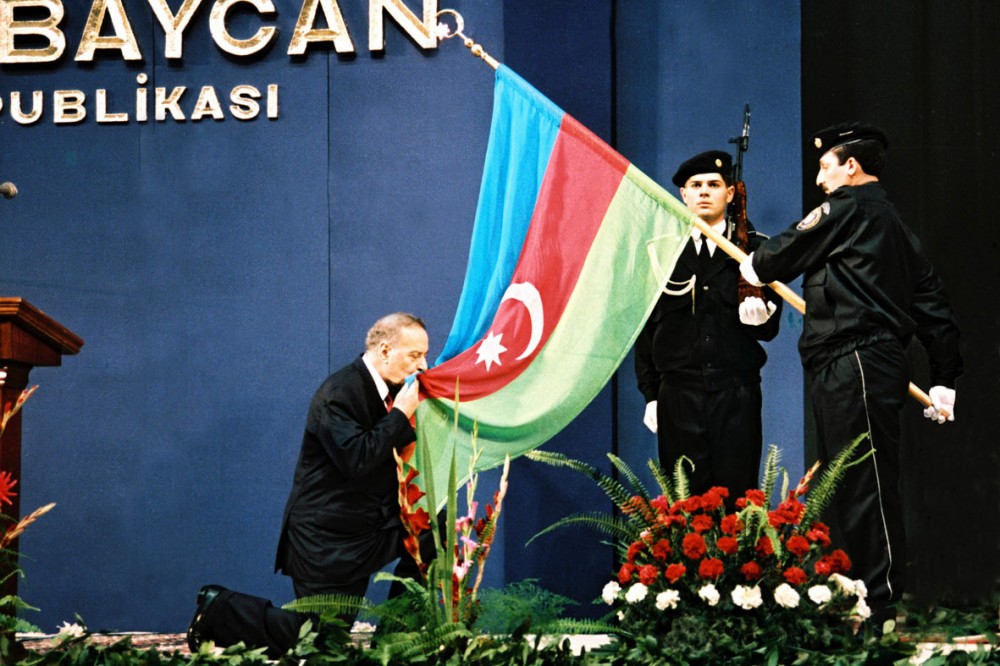
Heydar Aliyev’s return to the government by the request of the people in 1993 laid the foundation for the important changes in the political and economic life of Azerbaijan. Heydar Aliyev who managed to avert the great disasters in Azerbaijan initiated the conduction of measures for the economic growth of the country as well. Vice President of SOCAR Ilham Aliyev has been involved in the process of negotiations since the very beginning and he became the most active participant in the said process. He adhered to the following brief and strong idea in his activity: “Our objective is not only to produce oil but also to transport it and get incomes. We must use the oil, political, economic, and other incomes to ensure the interests and welfare of the people. The numerous meetings and negotiations in which he participated were conducted under the said slogan. Certainly, a number of difficulties and obstacles also existed. The last stages of the negotiations related to the contract of the century in Istanbul and Huston in spring and summer of 1994 were the hardest ones. Sometimes the crisis occurred and the negotiations reached suspension due to the non-acceptance of definite provisions. Ilham Aliyev recalls the following: “We said the foreign companies: You protect interests of different companies and we protect the interests of the Azerbaijani people. If you do a mistake it will affect only a project of your company but in case we do a mistake that will cause harm to the people of Azerbaijan. In other words, we must not do mistakes”. Despite all the difficulties the contract was worked out in conformity with the national interests of Azerbaijan.
A production sharing agreement on the joint development of deepwater reserves of Azeri, Chirag, and Guneshli was signed at the Gulistan Palace in Baku on September 20, 1994. The contract was called the contract of the century due to its historical, political, and international importance and was reflected in 400 pages and 4 languages. It included 13 leading oil companies (AMOCO, BP, McDermott, UNOCAL, SOCAR, LUKOIL, Statoil, Exxon, Turkish Petrol, Pensoil, Itochu, Remco, Delta) from 8 countries of the world (Azerbaijan, USA, Great Britain, Russia, Turkey, Norway, Japan, and Saudi Arabia). Thus the new oil strategy and its doctrine were initiated successfully.

The International Operating company was established in the first days of the contract of the century and started its conjoint activity with SOCAR in accordance with its ratified program. Later the contract promoted the signing of 32 contacts with 41 oil companies from 19 countries of the world. The contract of the century was included in the list of the largest documents concluded in the world for the volume of hydrocarbon reserves and investments. USD 57.6 out of 64 billion stipulated for the development of the oil industry in Azerbaijan went for the assimilation of the offshore fields and conduction of exploration on the prospective structures.
Significant changes occurred in the economics of Azerbaijan since the commencement of the contract of the century and great works were carried out. First of all, in frames of the project of oil production Chirag-1 was restored in accordance with the modern standards in 1995 and the upper module of the said plant was modernized and equipped with new technologies for the drilling of richer wells. The new drilling plant enabled to drill of horizontal plants. The wells A-18 (with the depth of 5500 meters), A-19 (with the depth of over 6300 meters) drilled with the maximal propensity started operating with the high production of oil. in 1997, the Chirag field started oil production.
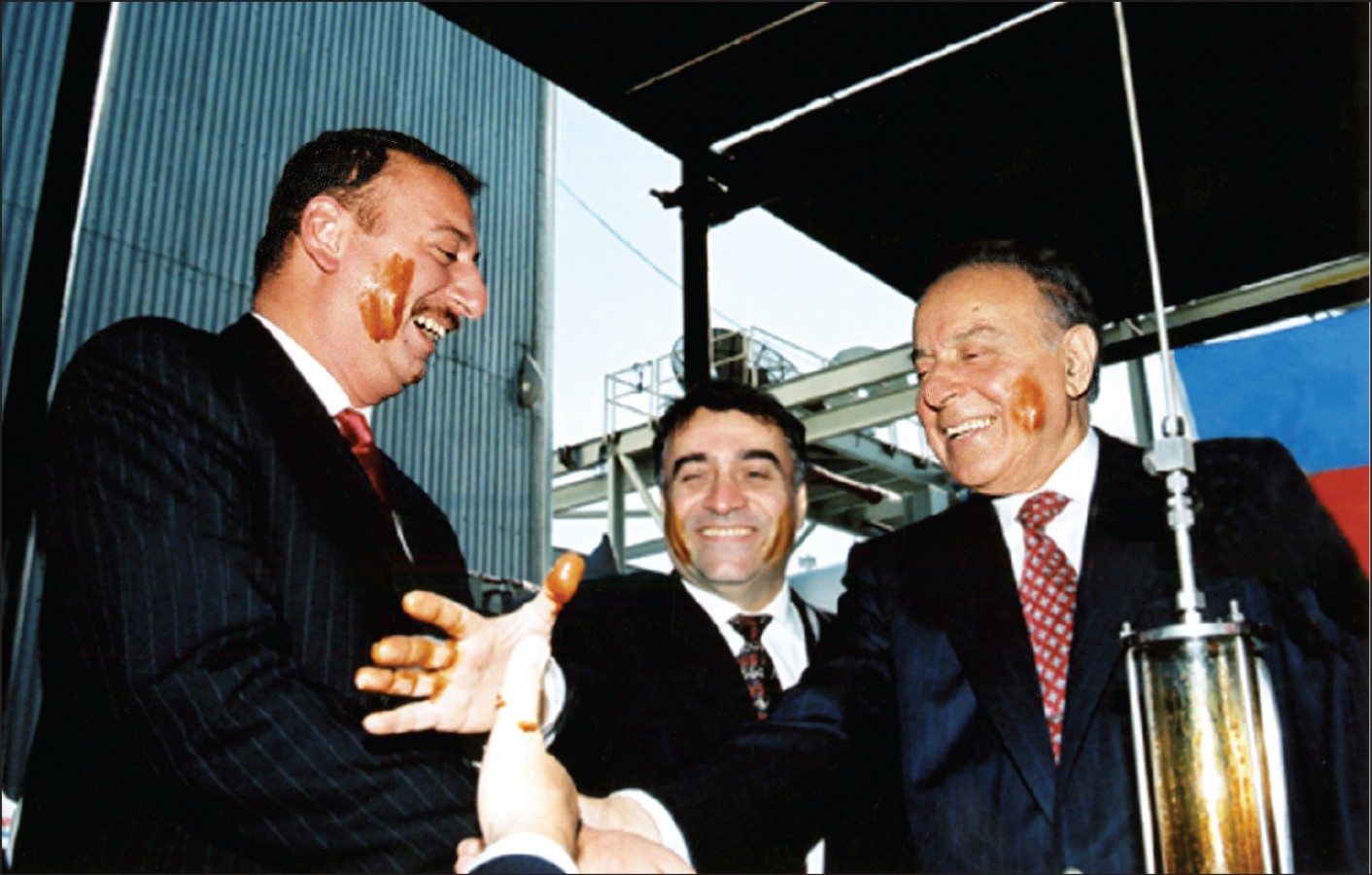
The first tanker load of Azeri profit oil sailed to the world in December of 1999. The currency received from the sales of oil went to the State Oil Fund of the Republic of Azerbaijan established by the national leader of the Azerbaijani people Heydar Aliyev and serves the people of the country. The Azeri section of an oil pipeline extending to 231 to the north and 720 mm in diameter was restored and constructed and the first Azeri oil was transported to the port of Novorossiysk (Russia) on October 25, 1997. The annual capacity of the pipeline is 6.1 million tons.
The Baku-Supsa export pipeline extending to 837 kilometers to the west and 530 mm in diameter was constructed and commissioned on April 17, 1999. The annual capacity of the pipeline is 5.1 million tons.
The country produced 9 million tons in 1997 and reached a peak in 2009 and produced more than 50 million tons.
The sailing drilling plant Dede Gorgud (former Caspmorneft) was restored and modernized for drilling the deep water test wells in the Caspian Sea. The plant is capable of drilling 7620 meters in the depth of 50-475 meters. Another plant Istiklal (former Shelf-5) was repaired and modernized and enabled to drill the wells of 7620 meters in the depth of 50-700 meters. 6 test wells were drilled as the result of the works carried out in Azeri-Chirag-Guneshli fields by means of the modernized drilling plants and thus oil reserves increased by 30%. These plants operated successfully on the Shahdeniz and Azeri-Chirag-Guneshli fields within the Caspian Drilling Company established in 1996. Great achievements were reached in the sphere of technique and technology with the help of the plant “Leader” named after Heydar Aliyev and constructed for Azerbaijan by foreign companies.
Presidents of the USA, Turkey, Azerbaijan, Georgia, Kazakhstan, and Turkmenistan signed an intergovernmental contract on the establishment of the main export pipeline Baku-Tbilisi-Ceyhan at the OSCE summit held in Istanbul, Turkey November of 1999.
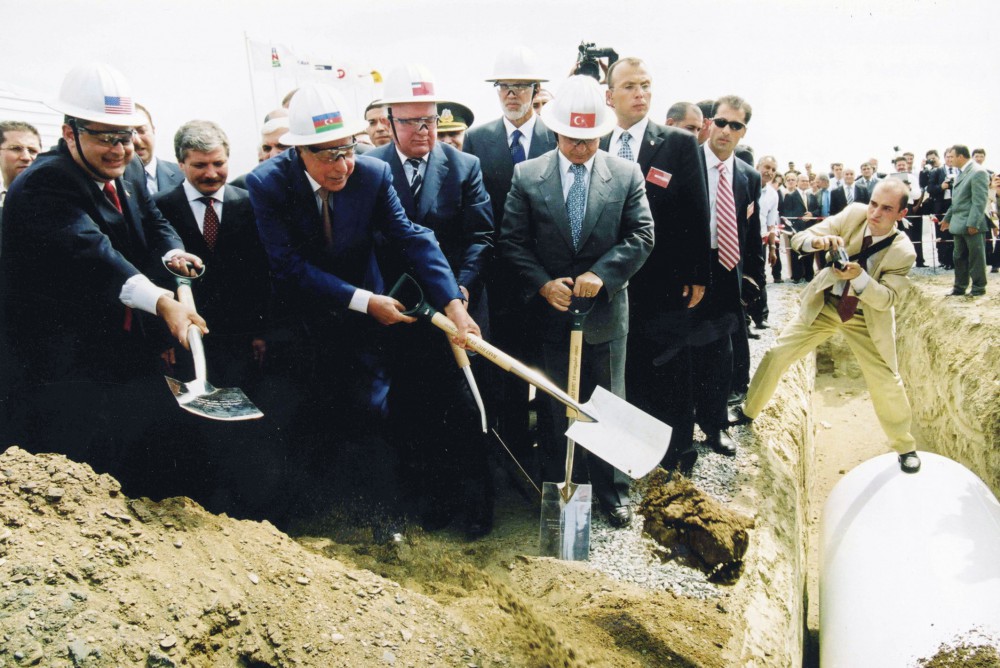
The foundation stone of the Baku-Tbilisi-Ceyhan pipeline was laid with the participation of the national leader of Azerbaijan Heydar Aliyev, Turkey, and Georgia at the Sangachal terminal in Baku on September 18, 2002, and its construction was initiated. On July 13, 2006, the opening of the Heydar Aliyev Baku-Tbilisi-Ceyhan main export pipeline which is the largest energy project of the 21st century, was held in Ceyhan, Turkey.
Construction of the Baku-Tbilisi-Erzurum gas pipeline and the start of the gas production from the Shah Deniz field was a historical event such as the Baku-Tbilisi-Ceyhan oil pipeline. Today, Azerbaijan is a country that not only exports oil but also, exports gas as a logical consequence of this project.
Our country started to play a crucial role in the world`s energy market with the launch of the Baku-Tbilisi-Ceyhan oil pipeline and Baku-Tbilisi-Erzurum gas pipeline in 2006 and 2007 respectively.
In 2010, a resolution was signed to operate the Chirag Oil Project. $ 6 billion development plan for the Chirag oil project and large investment project has entered the country’s oil history. This project which is known as West Chirag will help stabilize oil production in the Azeri-Chirag-Guneshli block and maximize oil production. The capacity of the platform is 25,000 tons of oil and 6.5 million cubic meters of gas per day.
On the 20th anniversary of the Contract of the Century, the foundation of the Southern Gas Corridor project was laid at the Sangachal terminal in September 2014.
In order to transport Azerbaijani gas and ensure the operation of the Southern Gas Corridor, large-scale works completed over Shah Deniz gas condensate field, South Caucasus Pipeline (SCP), Trans-Anatolian Pipeline (TANAP), and Trans-Adriatic Pipeline (TAP).
The “Contract of the Century” signed in difficult political and economic conditions and led to the foundation of Azerbaijan`s economic development.

On the 23rd anniversary of the Contract of the Century, the agreement signed on amendments on the production sharing and development of the Azeri-Chirag-Guneshli block in Baku in September 2017. According to this regulated agreement, the duration of the `Contract of the Century` extended until 2050.
When the Contract of the Century was signed in 1994, it is estimated that there are 511 million tons of oil in Azeri-Chirag-Guneshli. However, reserves exceeded forecasts. At present, Azeri-Chirag-Guneshli has 500 million tons of unproduced oil.
According to the new agreement, BP will remain the operator of the project. As part of the agreement, SOCAR’s share in the Azeri-Chirag-Gunesli field will be increased from 11.65% to 25%, and international partners will pay a $ 3.6 billion dollar bonus to SOCAR.
Following the approval of the agreement, the new share in Azeri-Chirag-Gunesli partners are as follows: BP — 30.37%; AzACG (SOCAR) — 25%, Chevron — 9.57%, Inpex — 9.31%, Statoil — 7.27%, ExxonMobil — 6.79%, TP — 5.73%, Itochu — 3.65%, ONGC Videsh Limited (OVL) — 2.31%.
The new terms of the agreement not only reflect the growing financial and technological potential of our country and company since 1994 but also demonstrate the confidence of foreign partners in the Azerbaijani economy and raise our partnership to a new level.
A gorgeous ceremony was held in November 2017 in Azerbaijan over the production of two billion tons of oil. Out of two billion tons of oil, 700 million tons were produced during independence.
THE MAIN TRANSPORT ROUTES OF ENERGY RESOURCES
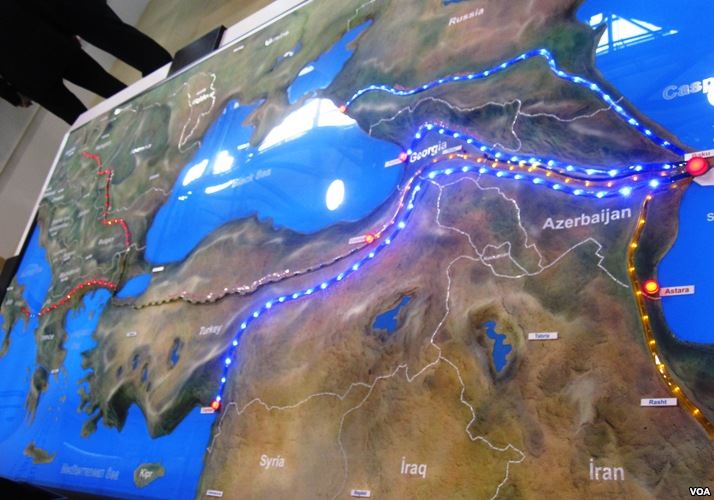
The way to transport energy resources to the global markets was one of the major trends of Azerbaijan`s new oil strategy. The establishment of the alternative routes for transportation of oil was another important element in the oil strategy of the national leader. The alternativeness of the oil transportation not only put an end to the economic dependence of Azerbaijan on any other state but also corresponded to the national interests of the country. Currently, Azerbaijan’s energy resources are exported to the world market via several routes. These are the Baku-Novorossiysk, Baku-Supsa, Baku-Tbilisi-Ceyhan oil pipelines, Southern Caucasus pipeline which is a part of the Southern Gas Corridor project, TANAP (Trans-Anatolian Natural Gas Pipeline), and TAP (Trans Adriatic Pipeline) gas pipelines under the Southern Gas Corridor project.
According to the new energy strategy, a number of successful projects have been signed over transporting Azerbaijan’s energy potential to world markets. Azerbaijan became the potential exporter of gas in the world during the last years and enriched the region and Europe`s energy map. Azerbaijan is an initiator and active participant in a number of global energy and transport projects that acts independent economic country. Azerbaijan ensured its energy security with its rich hydrocarbon resources. On the other hand, Azerbaijan has been making significant contributions to Europe’s energy security for many years.
Our Republic has significantly strengthened its role in the world energy market as a result of the accurate transportation strategy of energy resources implemented today.
Baku-Novorossiysk
A treaty was signed in Moscow on February 18, 1996, about the transportation of Azerbaijani oil through the territory of Russia to the Black Sea port of Novorossiysk. The trilateral contract concluded between the International Operating Company of Azerbaijan, SOCAR and Transneft reflected all legal and technical issues stipulating for the transportation of oil to the port of Novorossiysk. In this agreement, Russia confessed by paragraph 2 of the said contract that it is not the owner of the Azerbaijan oil. The owner of Azerbaijani oil is the producer of it. This event is one of the crucial achievements of Azerbaijan`s new oil strategy for that period. According to the agreement`s primary conditions, Azerbaijani oil transported to the world market via northern pipeline on October 25, 1997. Baku-Novorossiysk pipeline extends to 1330 kilometers with 231 kilometers in Azerbaijan. It is 720 mm in diameter. The annual capacity of the pipeline is 6.1 million tons.
Baku-Supsa
President of Azerbaijan Heydar Aliyev and President of Georgia E. Shevardnadze agreed on the establishment of the Baku-Supsa pipeline in Tbilisi March 8, 1996. The trilateral contracts signed between the International Operating Company of Azerbaijan, SOCAR, and Georgia stipulated for the first Azeri oil from Azeri, Chirag, and Guneshli fields to be transported by the Baku-Supsa oil pipeline.
The first Azeri oil started to be transported by the Baku-Supsa pipeline on April 17, 1999. The major advantage of the pipeline was the transportation of net Azeri light oil to the global markets. At the same time, the lower prices of the transportation of oil to Supsa and Novorossiysk were also the positive feature of the route. The Baku-Supsa pipeline extends to 837 kilometers to the west and 530 mm in diameter. The annual capacity of the pipeline is 5.1 million tons.
Baku-Tbilisi-Ceyhan oil pipeline
The implementation of a strategically important project as the Baku-Tbilisi-Ceyhan main export pipeline was a very important event in terms of ensuring the transportation of oil to the global markets due to the protection of the national interests of Azerbaijan. İt is also important for the development of large-scale international economic cooperation, and the increase of oil production in the country.
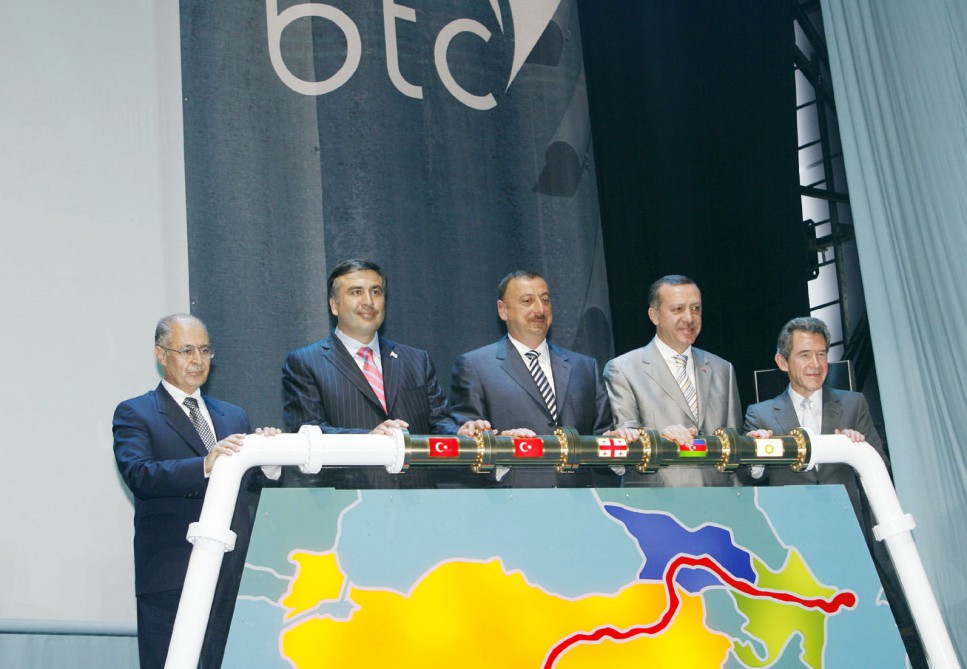
First, the exact idea of the establishment of the main oil pipeline was determined at the Trabzon meeting of the presidents of Azerbaijan, Georgia, and Turkey on April 26, 1998. The three Presidents announced openly that Baku-Tbilisi-Ceyhan must the head export pipeline thus declaring the political decision on the implementation of the project. The first agreement on the said project was reached by the signing of the Ankara declaration supporting the establishment of the head export pipeline with the route Baku-Tbilisi-Ceyhan by the Presidents of Azerbaijan, Turkey, Georgia, Kazakhstan, and Uzbekistan and the US Energy Minister in Ankara on October 29, 1998.
As a result of all that a contract on the transportation of crude oil by Baku-Tbilisi-Ceyhan pipeline via Azerbaijan, Georgia, and Turkey was signed during the OSCE summit at Chyraghan Palace of Istanbul on November 18, 1999. It was signed by H. Aliyev, E. Shevardnadze, and S. Demirel. The Istanbul Declaration was signed between Azerbaijan (Heydar Aliyev), Turkey S. Demirel), Georgia (E. Shevardnadze), Kazakhstan (Nursultan Nazarbayev), and Turkmenistan (S. Niyazov) under the witness of the USA (B. Clinton) to support the Baku-Tbilisi-Ceyhan pipeline and to attract Kazakhstan and Turkmenistan to the project. The construction of the Baku-Tbilisi-Ceyhan pipeline was initiated on the Sangachal terminal on September 18, 2002, as the logical continuation of this process. The ceremony was attended by three President-President of Azerbaijan Heydar Aliyev, President of Georgia E. Shevardnadze, and President of Turkey A. N. Sezer, and US representatives for the Caspian issues S. Mann. Thus, Baku-Tbilisi-Ceyhan, the major achievement of the new oil strategy worked out by national leader Heydar Aliyev, was on the point of coming to life.
The Azeri section of the BTC pipeline joined Georgian one in October of 2004. On May 28, 2006, Azerbaijani oil reached the port of Ceyhan, where the first tanker loaded with oil departed on July 4. On July 13, 2006, the opening of the Heydar Aliyev Baku-Tbilisi-Ceyhan main export pipeline which is the largest energy project of the 21st century, was held in Ceyhan, Turkey.
Almost $ 4 billion has been spent on the construction of the 1,774-kilometer line from the Sangachal terminal to the Ceyhan terminal on Turkey’s Mediterranean coast. The operator of the project is BP company. The project comprises the following shareholders: BP (30.1%), SOCAR (25%), UNOCAL (8.9%), Statoil (8.71%), TRAO (6.53%), ENI (5%), TotalFinaElf (5%), Itochu (3.4%), Inpex (2.5%), ConocoPhillips (2.5%) and Amerada Hess (2.36%).
The Baku-Tbilisi-Ceyhan pipeline can transport 60 million tons of oil a year. More than 2.7 billion barrels of crude oil have been transported via the pipeline since the Baku-Tbilisi-Ceyhan was put into operation. The Baku-Tbilisi-Ceyhan pipeline has great importance for Azerbaijan, Georgia, Turkey, and the region as a whole, Europe, and the world in general in terms of its great economic, political, and energy security.
Southern Caucasus Pipeline

The great Shahdeniz gas condensate field was discovered in 1999 as the result of the successful conduction of the new oil strategy, the high level of investments in the oil industry, and the application of modern technique and technology in the oil operations. The Shahdeniz field and BTC pipeline projects comprise SOCAR (Azerbaijan)-10%, Statoil (Norway)-25.5%, BP (Great Brotain), TotalFinaElf (France)-10%, LukAcip (Russia Italy)-10%), OLIK (Iran)-10%, TPAO (Turkey)-9%. The discovery of the Shahdeniz gas field created conditions for the development of gas industry in Azerbaijan and the transformation of the country into one exporting gas along with oil in the 21st century.
During the official visit of the President of Azerbaijan Heydar Aliyev to Turkey, Azerbaijan and Turkey signed a contract on the sales and purchase of the natural gas of Azerbaijan on March 12, 2001. Azerbaijan and Georgia signed a contract on the transit, sales, and transportation of natural gas via Georgia was signed on September 29 of 2001.
Natural gas from the Shah Deniz gas condensate field in the Azerbaijani sector of the Caspian Sea entered the Turkish gas pipeline system via the Baku-Tbilisi-Erzurum gas pipeline in July 3, 2007.
The Southern Caucasus pipeline is 690 km long and it has a capacity to transport up to 20 billion cubic meters of gas. The pipeline is on the same route as the Baku-Tbilisi-Ceyhan (BTC) crude oil pipeline in Azerbaijan and Georgia until the Turkish border and is connected to Turkey’s gas distribution system.
Baku-Tbilisi-Erzurum pipeline made Azerbaijan a gas exporter for the first time after its operation. Azerbaijani gas started to export to Georgia and Turkey. At the same time, this process paved a way for the foundation of the Southern Gas Corridor and the development of the Shah Deniz field.
In order to ensure the operation of the Southern Gas Corridor, large-scale works started on the Southern Caucasus Pipeline (SCP).
The expansion of the South Caucasus Pipeline is part of a full-scale development project for the Shah Deniz field. The construction of a new pipeline in Azerbaijan and the construction of two new compressor stations in Georgia are included in this expansion. With this pipeline, more than 20 billion cubic meters of gas exported per year, and the volume of gas exportation tripled.
Southern Gas Corridor
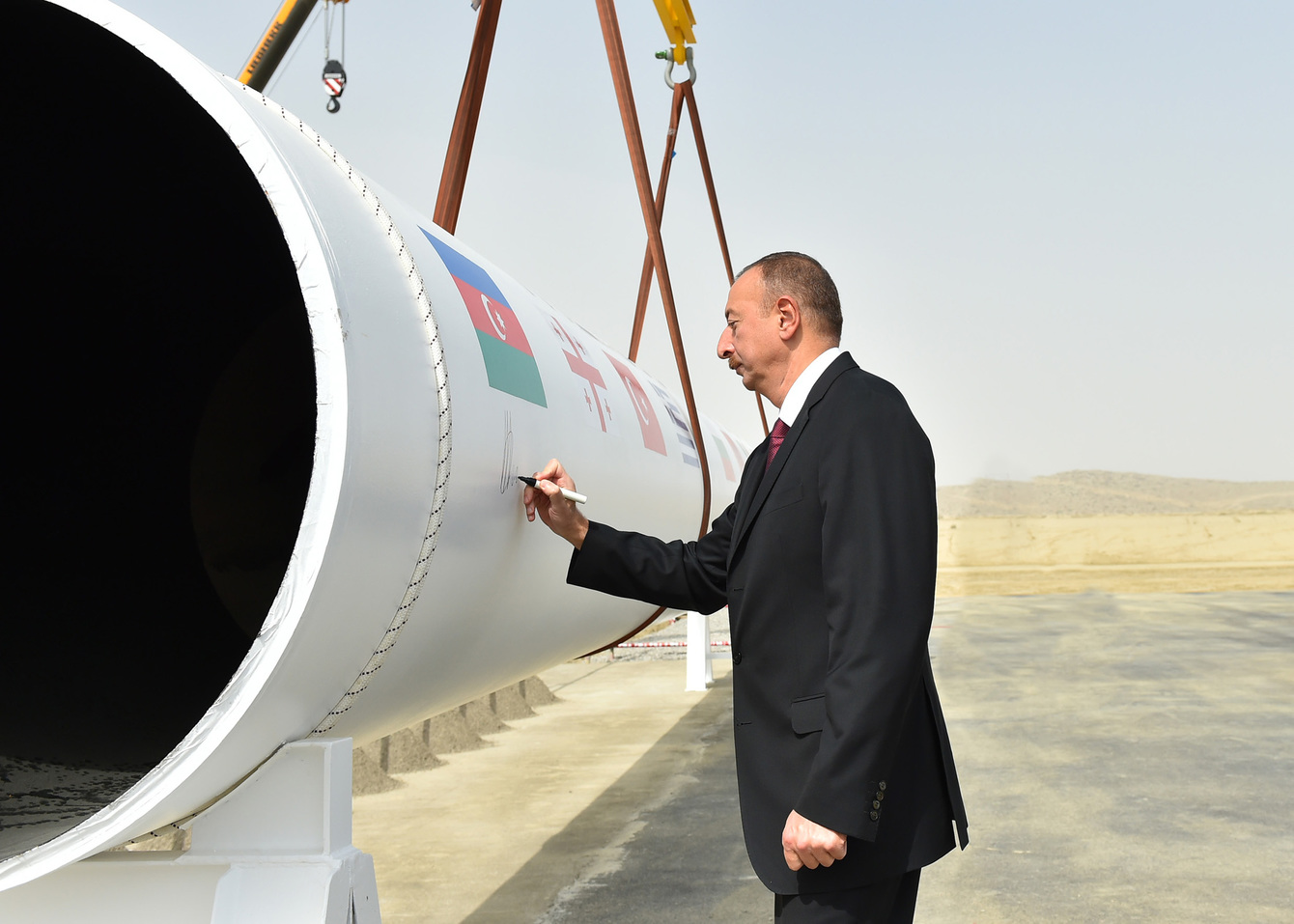
On the 20th anniversary of the Contract of the Century at the Sangachal terminal in 2014, the basis of the Southern Gas Corridor was a logical continuation of a successful 20-year energy policy. This project will be twice longer as Baku-Tbilisi-Ceyhan and an estimated $ 45 billion. This project will not only contribute to Azerbaijan by bringing additional dividends but also, develop the country`s economy more.
The Southern Gas Corridor which is an important factor in the energy security of Europe, will broaden multilateral partnership and accelerate the process of international cooperation. Firstly, Georgia, Turkey, Greece, Bulgaria, Albania, Italy, and later Montenegro, Croatia, and other countries will be able to join the Southern Gas Corridor.
Works on four elements for the implementation of the Southern Gas Corridor are continuing successfully. Currently, four elements of the corridor – Shah Deniz – 2 fields, the expansion of the Southern Caucasus pipeline, works on TANAP and TAP projects are completed. The official opening ceremony of the Southern Gas Corridor took place at the Sangachal terminal in Baku on May 29, 2018.

TANAP is an important part of the Southern Gas Corridor. On June 26, 2012, an intergovernmental agreement signed between the Government of the Republic of Turkey and the Government of the Republic of Azerbaijan concerning the Trans-Anatolian Natural Gas Pipeline System. Both governments` legislatures ratified the agreement.
On June 12, 2018, the TANAP gas pipeline was put into operation in Turkey`s Eskisehir city.
Trans-Anatolian Gas Pipeline has great economic and political importance because, this pipeline does not only supply the gas which is produced under the Shah Deniz project, but also, natural gas from other fields of Azerbaijan to the world market.
Trans-Anatolian Gas Pipeline transports natural gas from the eastern border to Turkey’s western border and ensures stable transit throughout the country. The project connects the expanded South Caucasus Pipeline which begins in Azerbaijan and connects with several European Union pipelines. The implemented project`s cost over the 5 years is $ 8 billion (US dollar).

TANAP`s total length is 1,850 kilometers and 18 kilometers of this length is underwater section. The diameter of the pipeline is 1.4 meters. It is expected that the capacity of the pipeline will reach 31 billion cubic meters in 2026. The shareholders of TANAP in this project are as follows: “Southern Gas Corridor” Closed Joint-Stock Company (CJSC) – 58 percent, Botas – 30 percent, and BP – 12 percent.
Trans-Adriatic Pipeline (TAP) project ensures the transportation of gas from the Caspian region via southern Greece, Albania, and the Adriatic Sea to southern Italy and from there to Western Europe. The TAP project is a continuation of the SCP and TANAP, ensures the transportation of gas from Shah Deniz-2 via Greece and Albania, across the Adriatic Sea to southern Italy, and from there to Western Europe. The TAP pipeline starts in Kipoi, Greece, on the border with Turkey. From here, the TAP pipeline crosses the territory of Greece and Albania and Its direction from east to west follows the Adriatic sea and reaches the coast of Puglia in Italy. This project creates great opportunities for the delivery of Azerbaijani gas to major European markets such as Italy, Germany, France, Great Britain, Switzerland, and Austria.
The annual transmission capacity of the TAP is 10 billion cubic meters it is expected to increase to 20 billion cubic meters in the future.
Shares of TAP shareholders in the project – BP (20 percent), SOCAR (20 percent), Snam S.p.A. (20 percent), Fluxys (19 percent), Enagás (16 percent), and Axpo (5 percent).
STATE OIL FUND OF THE REPUBLIC OF AZERBAIJAN
“Transparency will be one of the major grounds to our success. It will bring about efficient management of the future oil revenues and allow every citizen of Azerbaijan to feel it in everyday life.”
Ilham Aliyev
President of the Republic of Azerbaijan
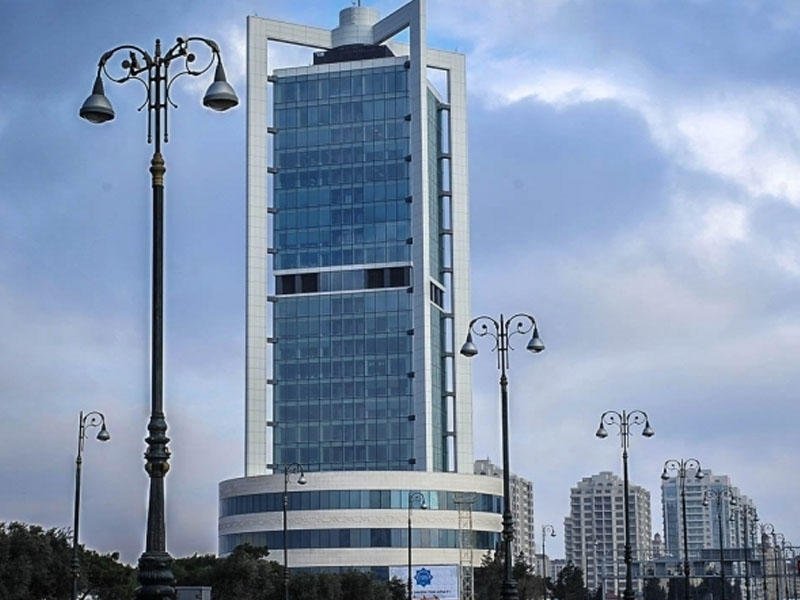
National leader Heydar Aliyev signed a Decree “On the establishment of the State Oil Fund of the Republic of Azerbaijan” on December 29, 1999. The main goal of the establishment of the State Oil Fund is collecting the revenues of the Republic of Azerbaijan related to the implementation of agreements on oil and gas reserves, managing efficiently, and preserving the future generations. The State Oil Fund has thoroughly fulfilled its obligations since its starting date and has taken a number of important measures to achieve its goals. The cornerstone of the philosophy behind the State Oil Fund of the Republic of Azerbaijan is to ensure intergenerational equality of benefit with regard to the country’s oil wealth, whilst improving the economic well-being of the population today and safeguarding economic security for future generations.
The experience of a number of countries, the advice of the international financial organizations were used in the establishment of the Oil Fund, and at the same time, the local characteristics and existing demands were also taken into account.
It should be noted that one of the main goals of the Government of Azerbaijan is to ensure the optimal balance between the funds used for the needs of the present generations and those accumulated for future generations.
At the end of September 2019, the Fund’s assets increased by 10.4% to $ 42.5 billion.
One of the important achievements of the State Oil Fund is its activity in the field of asset management. the State Oil Fund has always demonstrated a positive return on asset management during the period of its activity. Additionally, since 2012, it has been investing in new financial instruments which aim to diversify the Fund’s investment portfolio and increase profitability.
The new investment policy of the Fund was adopted in accordance with the amendments under the Presidential Decree No. 519 dated October 27, 2011, made to “Rules on the management of foreign currency assets of the State Oil Fund of the Republic of Azerbaijan”, for the purposes of increasing profitability and diversification of the Oil Fund’s investment portfolio. According to the new investment policy, a maximum of five percent of the investment portfolio can be allocated into each of the new asset classes such as gold, equities, and real estate. The currency composition of the investment portfolio of the Fund consists of the 3 main currencies: 50% invested in assets denominated in USD, 40% invested in assets denominated in EUR, and 5% invested in assets denominated in GBP. Besides, State Oil Fund is allowed to invest up to 5% of the investment portfolio in assets of member countries of the G7, European Monetary Union, denominated in Turkish lira, Russian rouble, and currencies of countries with a sovereign credit rating of not less than “A”.
The State Oil Fund also financed a number of significant projects for the socio-economic development of our country. Currently, the Fund continues to finance some national projects.
Funds allocated from the State Oil Fund:
1. Financing of the share of the Republic of Azerbaijan in Heydar Aliyev Baku-Tbilisi-Ceyhan Main Export Pipeline project (completed in 2006) – 297.9 mln. manats.
2. Improving social conditions of refugees and solving the problems of internally displaced families settlement – 2 102.7 mln. manats.
3. Construction of a water pipeline from the Oghuz-Gabala region to Baku (completed in 2011) – 779.6 mln. manats.
4. Reconstruction of Samur-Absheron irrigation system – 1 379.6 mln. manats.
5. Transfers to the state budget – 77 617.0 mln. manats.
6. Financing the statutory capital of State Investment Company (completed in 2006) – 90.0 mln. manats.
7. Baku-Tbilisi-Kars new railway project – 572.4 million manats.
8. Financing the State Program on Education of Azerbaijani Youth Abroad in 2007-2015 – 205.4 million manats.
9. Financing of SOCAR share in the Azeri-Chirag-Gunashli project – 87.6 mln. manats.
10. Construction of STAR oil refinery complex – 1 663.3 mln. manats.
11. Financing the share of the Republic of Azerbaijan in “Southern Gas Corridor” CJSC statutory capital – 1 530,3 mln. manats.
AZERBAIJAN INDUSTRY
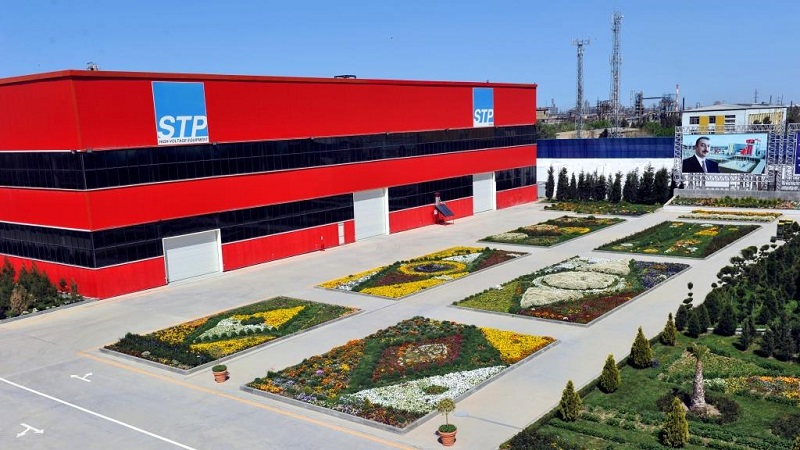
Modern industry is one of the aforethought, crucial programs for Azerbaijan`s future development. industrialization of the sustainable economy accelerated in the last years as a result of the successful policy pursued in accordance with the requirements of the new era. Industrial parks and industrial districts play a crucial role in the sustainable development of the non-oil industry in Azerbaijan. Industries created by using local resources, reduction of the infrastructure costs in the organization of the production process, strengthening cooperation between entrepreneurs increases industry in employment. Hundreds of modern industrial institutions started their operations and new industries have been created. The demand for local products has increased significantly. The volume of exports has also increased. If we look at the works done in the previous years, we can clearly see that our country gained some achievements in this area.
According to the Republic of the President of Azerbaijan`s strategic line, which is “Azerbaijan’s future development should be involved via the development of the industry”, the development of industrialization and the non-oil industry is one of the significant factors of the policy of economic diversification.

The main goal of the approved by the Decree dated December 6, 2016, ”Strategic Roadmap for the development of heavy industry and machinery manufacturing in the Republic of Azerbaijan” is modern regulation in heavy industry and machinery manufacturing. Also, ensuring the dynamic development of the non-oil industry by application of incentive policy is another goal of this decree.
According to the successful industrialization policy, in order to ensure the sustainable development of the non-oil sector and increase the population`s employment in the manufacturing sector, the process of the creation of industrial parks and industrial districts continues successfully. The creation of industrial parks with modern manufacturing infrastructure aimed to develop industrial institutions and ensure the balanced development of the country’s economy. Also, it provides development of production and innovation in accordance with the implementation of state policy. increasing the export capacity of the country’s economy, as well as the production of competitive, increase of the import-substituting products are important factors in terms of the establishment of industrial parks and sustainable development of the country’s non-oil sector. Also, employment in the other regions, investment, and attraction of modern technology play a significant role in this area.
For the development of the country’s industrial production competitiveness by means of innovative and high technology in the country, Sumgait Chemical Industrial Park was established under the Decree of December 21, 2011, of the President of the Republic of Azerbaijan. It is considered to create institutions for the production and processing of competitive products in the petrochemistry and other priority industries in the Sumgait Chemical Industrial Park. The territory of Sumgait Chemical Industrial Park is 508.14 hectares.
Sumgait Chemical Industrial Park already has 24 institutions and 15 of them have already started their operation. In the industrial park, 5.000 billion manats have been allocated for existing projects of institutions, and as well as more than 5.400 jobs have been created.
On January 18, 2021, the foundation of Azersulfat LLC sulphuric acid production plant and Glassica CJSC glass container production plant was laid in Sumgait Chemical Industrial Park. Also, Azerfloat CJSC thermoforming sheet glass plant at the Sumgayit Chemical Industry Park was inaugurated.

Great opportunities are created in the industrial zone of the park, for the activities of institutions in the field of the chemical industry, construction industry, and other industries. There are also some institutions that exist to provide vocational educations.
In addition, Balakhany Industrial Park was established in Baku by the Decree of the President of the Republic of Azerbaijan dated December 28, 2011, for the purpose of supporting of entrepreneurship in the country, organization of industrial enterprises based on modern technologies, and increase of employment. The territory of Balakhany Industrial Park is 10.15 hectares. Totally, 19 institutions were registered in the Park and 16 of them started their operations. The main goal of the establishment of this park is about creating opportunities for potential entrepreneurs and investors interested in the field of reproduction.
Garadagh Industrial Park was established in Garadagh under the Decree №1255 dated June 3, 2015, of the President of the Republic of Azerbaijan. The administrative organization of Garadagh Industrial Park is “Sumgayit Chemical Industrial Park” LLC operating under the Ministry of Economy of the Republic of Azerbaijan. Garadagh Industrial Park has an institution – “Baku Shipyard” LLC. 847.1 million manats were allocated to the industrial park and 2,000 jobs were created.
İn addition, Mingachevir Industrial Park was established under the Decree №1077 dated February 26, 2015, of the President of the Republic of Azerbaijan. Mingachevir Industrial Park is a place that contributes effective operation and development of entrepreneurs. For entrepreneurship, Mingachevir Industrial Park is an area with its necessary infrastructure and management structures. This institution organized for competitive productions based on modern technologies. The administrative organization of the Mingachevir Industrial Park is “Sumgayit Chemical Industrial Park” LLC operating under the Ministry of Economy of the Republic of Azerbaijan.
The groundbreaking ceremony of Mingachevir Industrial Park was held on September 21, 2016, with the participation of the President of the Republic of Azerbaijan. “Mingachevir Tekstil” LLC`s two factories are registered as an institution in the Mingachevir Industrial Park. These factories were put into operation on February 27, 2018, with the participation of the President of the Republic of Azerbaijan. Also, these factories’ annual production capacity is 20,000 tons of yarn. The equipment was brought leading companies in Germany, Switzerland, Spain, and Japan. In the factories, more than 700 permanent jobs have been created.
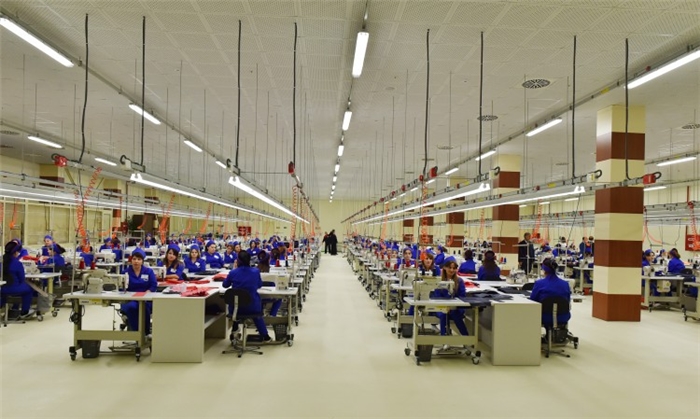
In order to develop the pharmaceutical industry in the country, Pirallahi Industrial Park was established under the Decree №2336 dated September 14, 2016, of the President of the Republic of Azerbaijan. On the other hand, necessary infrastructure services and other services are provided to entrepreneurs in the industrial park where established on an area of 30 hectares. Currently, there are 5 institutions registered in Pirallahi Industrial Park, and 2 of them have already started their operation. Totally, institutions invested 29.1 million manats in the industrial park and 110 jobs were created. Additionally, it is assumed to invest an additional 47 million manat on existing projects and create more than 500 permanent jobs.
In the last years, hundreds of industrial institutions built and started their operations based on the state programs of socio-economic development of the regions of the Republic of Azerbaijan, and thousands of new jobs have been created.
With the order of the President of the Republic of Azerbaijan, No. 288 of 8 October 2014 “On Creation of Industrial Districts and Organization of their Activity” was determined. The main goal of the creation of the industrial districts is about providing favorable conditions for the development of small and medium-sized businesses operating in the industry and increase employment in production and services.
It is determined in the decree that industrial districts are an area for the necessary infrastructure for entrepreneurial activities and these districts are used by small and medium-sized enterprises for the production of goods. İndustrial districts have great importance in terms of reducing infrastructure costs, strengthening cooperation, developing small and medium enterprises, etc. Currently, industrial districts continue their operation in Neftchala, Masalli, Hajigabul, and Sabirabad districts of the Republic of Azerbaijan.
As a result of the Patriotic War, the liberation of the territories occupied for almost 30 years paved a way for the development of the economy of Azerbaijan and created favorable conditions. The industrial potential of the liberated territories is high. Rich water supply, electricity, rich minerals, and industrial recreation opportunities form the basis of the industrial potential of the liberated territories. These factors show that the industrial potential of the liberated territories will contribute value to the country`s economy in the next years.
Azerbaijan became the strong industrial center of the region in the last years and this is proved with the indicators that show the achievements in the field of industry.
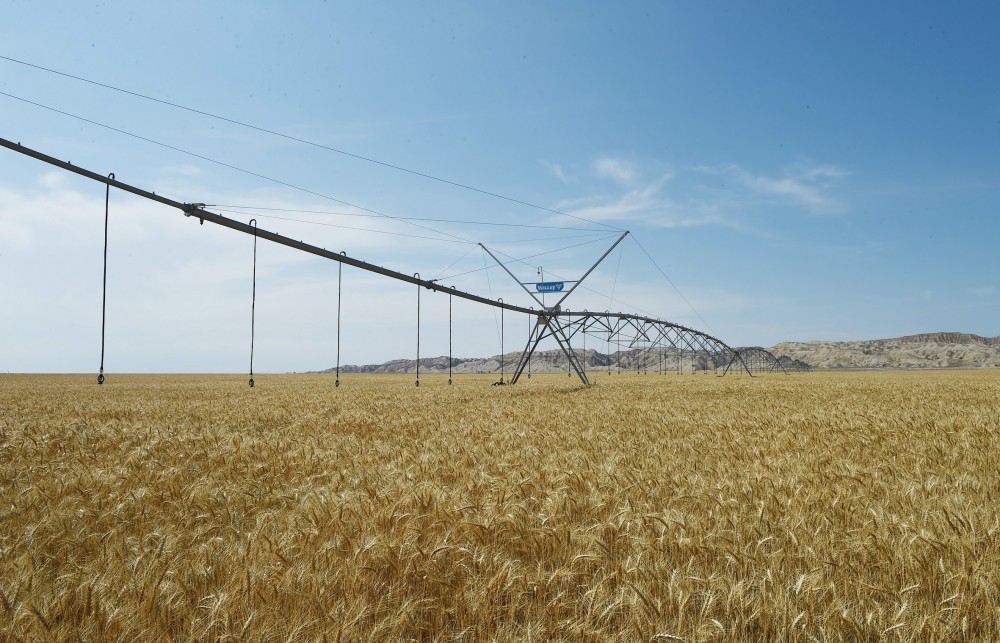
After Azerbaijan gained its independence, the development of agriculture in Azerbaijan was not easy, just like other fields of the economy of Azerbaijan. Achievements gained nowadays are the results of being hardworking and sound policies. Our Country does not only provide itself with strategic local products but also, we are a country that export agricultural products to other countries.
Today, with the initiative of President Ilham Aliyev, according to modern requirements, works are going on for the development of agriculture in Azerbaijan. It is no coincidence that after Ilham Aliyev elected the President of the Republic of Azerbaijan in 2003, firstly, he signed a decree and order in order to develop the agrarian sector. People who were busy in the agricultural sector, became free in terms of paying all taxes, except land tax. They began to receive subsidies for fuel and lubricants, fertilizers, seeds and breeding animals. Also, additional discounts were made to producers of traditional products such as wheat, cotton, cocoons, tobacco, rice, hazelnuts, etc.
Financial support plays a crucial role in the development of the agricultural sector. In addition, today, along with entrepreneurs working in other fields, farmers are given soft loans in Azerbaijan.
By using these financial supports efficiently, many farmers turn their farms into large farms. So, a number of large farms are operating in the country. The activities of these farms play a crucial role in terms of stabilizing the consumer market, increasing export potential, reducing dependence on imports, and strengthening food security in general.
In the last years, along with the development of the non-oil sector which is one of the important sectors of the economy, agriculture is also developed dynamically and sustainably. This trend increased the employment of the population. Works were done in the efficient use of arable lands and available water resources and thousands of hectares of land have been involved in crop rotation. As a result, it is seen that there is sustainable growth in agricultural production.

Crucial works continued in the country in order to achieve a large increase in the production of cotton, grain, and other agricultural crops and cattle-breeding. Measures were taken such as Improvement of the irrigation system in the arable lands and putting newly irrigated lands into operation. Water reservoirs, pumping stations, main canals, and other water facilities were built and put into operation.
The President of the Republic of Azerbaijan signed a decree No 1897 about approval of the main directions of the strategic road map on the national economy and the main sectors of the economy and the issues arising out of it. With this decree, on the basis of the depth analysis of the economy, the current situation of the production of the agricultural goods and their processing systematically and comprehensively discussed by the relevant government agencies, research centers, and independent experts. The relevant assessment was done and according to these assessments, “Strategic Roadmap for the Production and Processing of Agricultural Products in the Republic of Azerbaijan” was prepared. This Strategic Roadmap reflects the country’s long-term development goals for agricultural development.
In order to improve management in the agrarian sector, the Agrarian Services Agency was established under the Ministry of Agriculture of the Republic of Azerbaijan.
Currently, the state provides extensive support for the development of agriculture.
Common government support measures:
- exempt agricultural producers from taxes;
- provide preferential loans to agricultural producers;
- apply customs credit to most of the agricultural and processed imports;
- pay 40% of the cost of the agricultural machinery and equipment sold or leased to agricultural producers by AgroService;
- pay 50% of insurance for agricultural assets and predicted insurable events.
Government support measures for plant-growing:
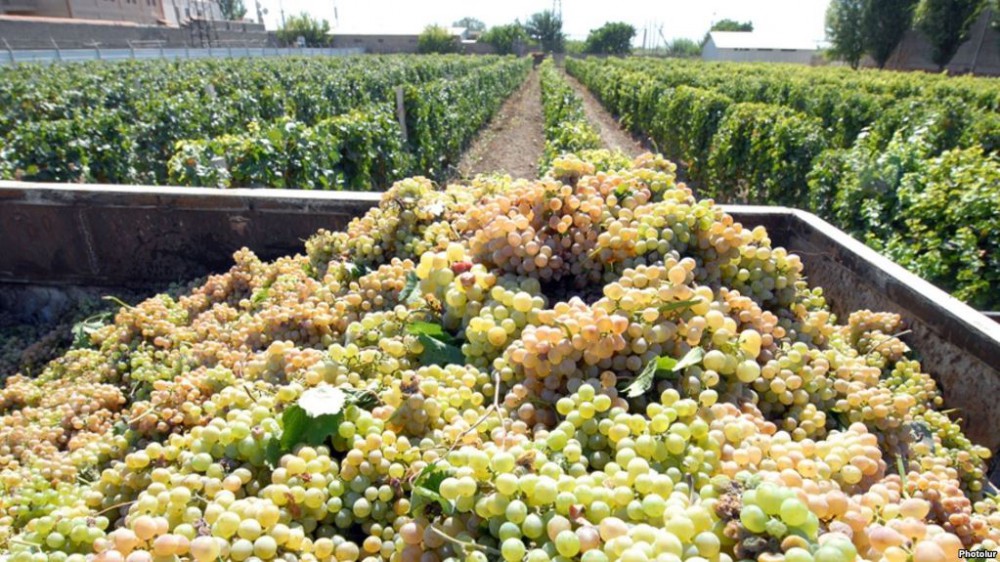
- provide subsidies worth AZN 50 for each hectare of crop fields in order to pay 50% of the cost of fuel and engine oil consumed for agricultural production;
- provide subsidies to processors of AZN 0.1 for each kilogram of sold cotton and, dry tobacco, and AZN 0,05 for each 10 kilograms of raw tobacco;
- People who are interested in cocoon production are provided with a subsidy of 5 (five) manats per kilogram of all types of wet cocoons (except for spun and “karapaçax” cocoons) accepted by cocoon processing and silk production institutions;
- legal entities which engaged in sugar beet processing and individuals who are engaged in entrepreneurial activities provided with 4.0 manats subsidies without establishing a legal entity for each ton of sugar beet to its producers;
- the price of irrigation water for agricultural producers is AZN 0,5 per 1000 m3;
- pay 40% of the cost of the modern irrigation equipment sold by AgroService;
- pay 70% of the fertilizers, pesticides, and industrial bio-humus;
- provide subsidies for seed and sapling production and sales;
- provide government funding for the application of IPM measures and quarantine for agricultural crops.
Government support measures for cattle-breeding:
- pay 50% of the cost of purebred animals imported and leased by AgroService;
- grant subsidies in the amount of AZN 100 for each calf produced through AI;
- provide relevant infrastructure for AI services;
- implement preventive and diagnostic measures against the 13 most dangerous animal and poultry diseases and infections;
- individuals and legal entities who are engaged in beekeeping for each bee family (hive), provided with 10.0 manats subsidies per year for five years, including 2018.
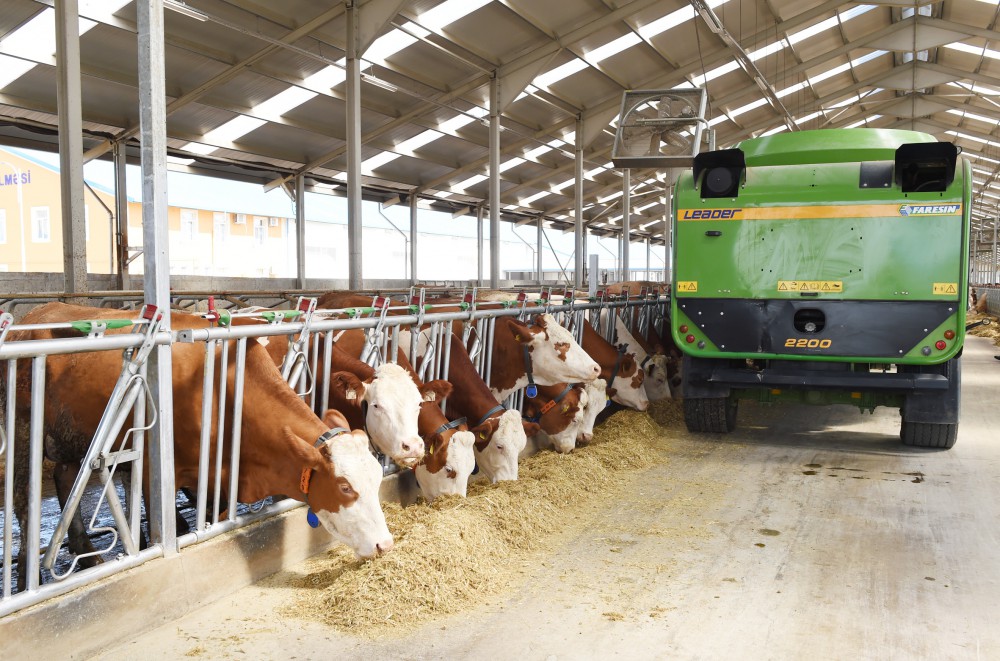
In connection with the implementation of the Decree of the President of the Republic of Azerbaijan dated December 6, 2016, No. 1138 “On approval of strategic roadmaps for the national economy and key sectors of the economy” for further improvement of business and investment climate in the country, as well as for the purpose of improvement of the system of regulation of entrepreneurial activity and application of effective coordination, increasing the role and competitiveness of small and medium enterprises in the country’s economy, facilitation of access to domestic and foreign markets, and agricultural producers to means of production, increase the production of essential food products to replace imports in the domestic market, strengthen food security, increase employment opportunities in rural areas and other areas continues successfully.
Currently, as a result of 44 days of the Patriotic War and the great victory of Azerbaijan over the Armenian Armed Forces, it is started to plan the further development of agriculture in the liberated territories. The liberation of our territories will have a positive impact on agricultural development. The country`s crop field will increase and hundreds of thousands of hectares will be irrigated as a result of the liberation of strategically important reservoirs. Our liberated territories have great potential in terms of viticulture, grain, cotton, and cattle breeding. With the expansion of the agro-processing industry and proper use of these potentials, sustainable development of agriculture will be ensured.
PRIORITY DIRECTIONS
In recent years, the implementation of state programs aimed at promoting the efficient use of the country’s economic potential and promotion of export-oriented production has accelerated the development of entrepreneurship in the agrarian sector, has created the basis for more efficient use of labor resources and natural resources in the regions, modernization of the infrastructure and increase in the employment rate of the population.

The processing of agricultural products has great importance in the socio-economic life of the country. During the last years, this sector has been determined as one of the main sectors of the economy, favorable conditions have been created for the development of this sector in Azerbaijan.
A number of legal acts, including state programs, have been adopted for the rapid development of cotton, viticulture, tobacco, cocoons. These legal acts mainly focused on meeting the demand for agricultural products, improving the supply of raw materials for processing enterprises, and strengthening state support for the expansion of the processing industry.
The implementation of state programs adopted in recent years to meet the needs of the population in food. Measures along promoting the production of export-oriented agricultural products have paved the way to significant results in the development of traditional agriculture in the country. These implementations increased employment and reduced poverty in the country.

The implementation of state programs approved by the Decree of the President of the Republic of Azerbaijan about approval of the State program on development of wine growing in the Azerbaijan Republic in 2012-2020, a strategic roadmap on production and processing of agricultural products in the Republic of Azerbaijan, the state program on development of cotton growing in the Republic of Azerbaijan for 2017-2022, a state program for the Development of Cocoon Production and Sericulture in the Republic of Azerbaijan for 2018-2025, approval of the state program on development of paddy growing for 2018-2015, state program on the development of tea growing in the Azerbaijan Republic for 2018-2027, `state program on development of citrus fruit-growing in Azerbaijan in 2018-2025` resulted with successful achievement in the agricultural sectors.
During the last years, the increase of the country`s export potential and innovative capacity of small and medium-sized entrepreneurs in the agricultural products processing, achieving high productivity played a crucial role in terms of creating agro-parks. Also, the formation of integration between producers, processors, and consumers in the widespread application of intensive methods in agricultural production and processing paved a way to create agro-parks.
Measures were taken in the agrarian sector of Azerbaijan for the creation of the Agro-parks and these measures successfully continue.
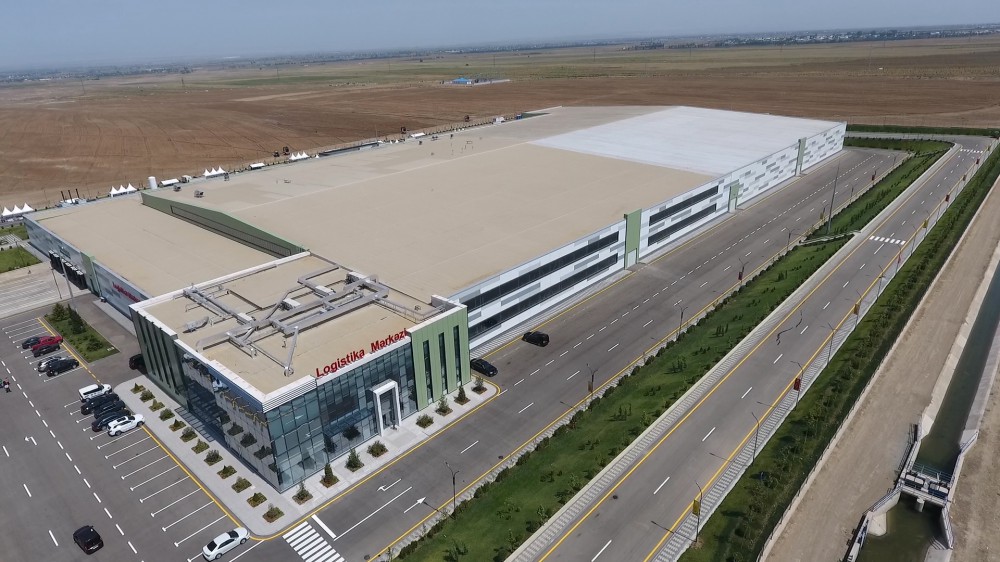
It is clear that new forms of agricultural development are emerging in the world. Our country is also taking appropriate measures to benefit from these experiences. Agro-parks is one of such progressive methods.
Agropark business model is an economic entity that surrounds the production, processing, logistics, and other services of agricultural products. The processes of production of agricultural products in agro-parks, agro-technical and logistics, sanitary and phytosanitary, marketing, sales (domestic market and export) and other services, production of raw materials, processes are carried out in high profitability. In addition to this, protection of the environment, the use of land and water resources and their protection secures and development of crop, stockbreeding, processing, and other sectors are provided. Its main activities related to food production are energy, water, and waste management, logistics, transport, site planning, and other processes. Agroparks are also characterized as a center that combines production, processing, procurement, research and development, trade, and social functions based on the principles of sustainable development.

Today, one of the main duties of Azerbaijan is about building the agro-industrial sector, which is a leading part of the non-oil sector, along with innovative criteria, including the creation of agro-parks.
The creation of agro-park in Azerbaijan continues and there are almost 40 agro-parks in Azerbaijan.
Our lands which were under the occupation of Armenia for almost 30 years have great agricultural potential. Currently, the `Strategic Action Plan` is prepared for our liberated territories. There is a restoration of all territories and cities. New mechanisms and criteria were created for the land reform. It aims at the development of liberated territories. Work is underway to develop important agricultural sectors such as stockbreeding floristry, olericulture, viticulture, and grain growing.
STATE PROGRAMS FOR REGIONAL DEVELOPMENTS

Under the leadership of President Ilham Aliyev, a new economic policy strategy of Azerbaijan was implemented in 2003. The first decrees issued by the President during his presidency were on measures to accelerate socio-economic development and socio-economic development of the regions. It is no coincidence that during the first period of his presidency, İlham Aliyev signed a decree “On measures to accelerate socio-economic development in the Republic of Azerbaijan” on 24 November 2003.
State Program I successfully implemented for the development of the regions laid down new development foundations in various regions of Azerbaijan and moved the process of development to the following successful stage. Thus, President Ilham Aliyev with his Decree dated April 14, 2009, ratified the “State program on social-economic development of the regions of the Azerbaijan Republic for 2009-2013”. The key target causing the elaboration of a new program was to achieve diversification and effective integration of country economy to world economic system, improvement of the level of infrastructure and public services, as well as a continuous enhancement of the standard of living of the population. As a result of successful implementation of tasks set in both programs, tangible progress was achieved in the sustainable development of the non-oil sector, in the creation of new enterprises and job places, in further improvement of business climate, in an increase of employment of population and in a decrease of the poverty level. After “The State Program on Socio-Economic Development of Regions of the Republic of Azerbaijan for 2009-2013 years” was implemented successfully in the country, it is shown that there is a necessity for a new third program. On 27 February 2014, President of the Republic of Azerbaijan signed a decree on State Program on socio-economic development of regions of the Republic of Azerbaijan for 2014-2018 years”. This program was the continuation of the works begun under the previous two completed programs.
During the period of implementation of state programs in 2004-2018, the GDP increased 3.3 times, including 2.8 times in the non-oil sector, 2.6 times in the industry, and 1.7 times in agriculture.

More than 2 million new jobs and more than 100,000 institutions were created in the country as a result of measures taken during this period. While 1.5 million jobs were permanent, unemployment fell by 5 percent and the poverty rate fell by 5.1 percent.
Currently, “The State Program on Socio-Economic Development of Regions of the Republic of Azerbaijan for 2009-2013 years` continues successfully.
Starting from 2004, state programs towards the social-economic development of the regions, resulted successfully. Restoration and construction work expanded in the regions. New production and service institutions based on modern technologies, social infrastructure facilities have been opened, and the level of employment has increased. The agricultural sector has been developed as a result of state support measures and special attention paid to increasing the production of competitive products. Improving the business environment in the country became of the main directions and great importance was attached to the development of entrepreneurship. Measures have been taken to further develop small businesses and Investment projects have been financed through soft loans. During the last years, meetings have been held in the regions on cotton, cocoons, hazelnuts, tobacco, tea, rice, citrus, and several state programs have been adopted.
The huge social infrastructure construction work carried out in recent years has completely changed the landscape of the regions. During these years, 58,000 kilometers of new gas pipelines have been laid in the regions, 13,000 kilometers of drinking water lines have been laid in the regions to improve water supply, about 470 modular water treatment plants have been installed, and 706,000 people have been provided with drinking water. More than 16,000 kilometers of roads were repaired and 470 bridges and tunnels were put into operation.
In the last 17 years, state programs over social-economic development of the regions, more than 3300 schools, hundreds of kindergarten, and medical institutions have been build and repaired. Last year, the regions also played a significant role in the growth of GDP in the non-oil sector by 3.5 percent and in the non-oil industry by 14.3 percent respectively. In 2019, 7.2 billion manats were allocated under the Fourth State Program for Socio-Economic Development of the Regions. (2020)
The creation of industrial institutions in the country`s 10 regions paved the way for the industrial process. In general, about 6 billion manats have been invested by institutions in industrial zones so far and more than 9,000 new jobs have been created. The total production in these zones increased 2.6 times. It should be noted that 80 percent of the products are produced by Sumgayit Chemical Industrial Park. Balakhani Industrial Park has expanded its activities and entered the second stage. In this regard, it is important to increase the efficiency of activities in other industrial zones. The implementation of projects under the investment promotion documents issued will lead to the investment of more than 4 billion manats in local production and the creation of about 28,000 new jobs. 87% of these projects belong to the regions. Thanks to the state support for the development of entrepreneurship, the Entrepreneurship Development Fund continues to provide soft loans. Compared to 2005, the share of total tax revenues in the non-oil sector of the regions doubled to 15 percent.

Currently, opportunities to expand the export geography of Azerbaijani products are investigating. By doing so, the main goal here is to expand the access of competitive and high-quality local products to foreign markets under the “Made in Azerbaijan” brand. As a result of the implementation of the successful state programs, compared with 2019, agricultural processing increased 14 percent. Agroparks and local farms play a crucial role in terms of the development of the country`s agricultural sector and these works continue.
Crucial work has been completed in Azerbaijan in the last years to apply information and communication technologies in the activities of government agencies, and the relevant legal framework has been formed. People are provided with electronic services in most government agencies. These services prevent bureaucratic hurdles and possible corruption. Crucial reform was signed in this area on July 13, 2012. The State Agency for Public Service and Social Innovations under the President of the Republic of Azerbaijan and its subordinate “ASAN service” centers were established.
Currently, a Strategic Action Plan has been prepared for Azerbaijan to restore the territories liberated as a result of the 44-day Patriotic War, which ended in great victory.
DEVELOPMENT OF ENTREPRENEURSHIP

Development of entrepreneurship, implementation of fundamental reforms for the creation of favorable business conditions arise from requirements of the economic development strategy set by national leader Heydar Aliyev and consistently implemented by President Ilham Aliyev. Assurance of sustainable and proportional development of country’s economy, acceleration of regional development is one of the priority duties in the present phase of socio-economic development of the country and successfully carried out in the frame of the state programs adopted.
Policy in this field is directed to the implementation of state support to entrepreneurship in the base of the system, lifting the effect of actions of state support to entrepreneurs. Continuous measures are taken to realize this strategic line. Entrepreneurship financial help mechanism was created and this source functions as an important real source to meet the need of small and medium entrepreneurs for funds.
Azerbaijan Export and Investment Promotion Foundation was created. The Foundation aims lifting the export capacity of the country and involving foreign investments. State-entrepreneur relations were developed, important steps were taken towards the improvement of the entrepreneurship state regulation system. Working mechanisms were created for the protection of the rights of entrepreneurs, interference dropped as a result of their use. Measures are underway to strengthen consulting, information support of entrepreneurship, and develop business ties.
The organization of the activity of entrepreneurship subjects by the ‘one-stop shop’ principle started to be applied from January 1, 2008. After the application of the ‘one-stop shop’ system, procedures to start a business were reduced from 15 to 1 and the term required for it from 30 to 3 days, a number of legal persons registered considerably grew.
As a result of purposeful actions share of the private sector in Gross Domestic Product (GDP) reached 85%.
In order to ensure the sustainable development of entrepreneurship in the country, the institutional organization of partnership between the state and entrepreneurs has been implemented. In this regard, the established mechanisms (Small and Medium Business Development Agency of the Republic of Azerbaijan, Azerbaijan Export&Investment Promotion Foundation, Business Training Centers, etc.) play an important role in the development of state-entrepreneur relations at the civil level.

In 2003, in order to increase the export capacity of the country and involving foreign investments, Azerbaijan Export and Investment Promotion Foundation was created. The Fund supports entrepreneurs in terms of increasing the export potential of the country’s entrepreneurs, expanding investment opportunities, finding potential partners, and implementing joint cooperation projects.
The Ministry of Economy and the Azerbaijan Export and Investment Promotion Foundation (AZPROMO) hold important economic events in this direction. For example, we can show events such as business forums, exhibitions, seminars, and conferences both inside and outside the country. These events are very important due to the promotion of the country’s business environment and economic potential, as well as for the development of business contacts of local entrepreneurs. The events organized in foreign countries show their positive results in terms of increasing the volume of investments in priority areas of the country’s economy.
By the Presidential Decree “on Improvement of the state support mechanism for entrepreneurship development in the Republic of Azerbaijan” dated July 31, 2018, the Entrepreneurship Development Fund was established as a public legal entity under the Ministry of Economy. The annual interest rate on concessional loans provided by the Entrepreneurship Development Fund was reduced from 6% to 5% to ensure more effective use of them. Furthermore, the credit limits for medium-sized loans were set as 50,001 to 1,000,000 AZN in accordance with the new procedures.
Multiple laws have been adopted to improve the legal framework in the field of entrepreneurship. One of such laws was adopted on 2 July 2013 to encourage entrepreneurship. This is the Law of the Republic of Azerbaijan “On regulation of the inspections conducted in the field of entrepreneurship and protection of the rights of entrepreneurs”.
The Law encompasses a series of issues such as the purpose and underlying principles of inspections carried out in the field of entrepreneurship, regulations on their organization and conduct, the rights and obligations of regulatory bodies and their representatives, and issues pertaining to the protection of entrepreneurs’ rights and interests. The main purpose of the Law is to establish unified rules of conducting inspections in the field of entrepreneurship as well as to prevent unlawful interference with the activity of entrepreneurs during inspection visits. In the territory of the country, all supervision measures (audits, checks, monitoring activities, observation, supervision, raids, etc.) should take place strictly following mandatory registration in the Integrated Information Registry and comply with the rules envisaged by the Law.
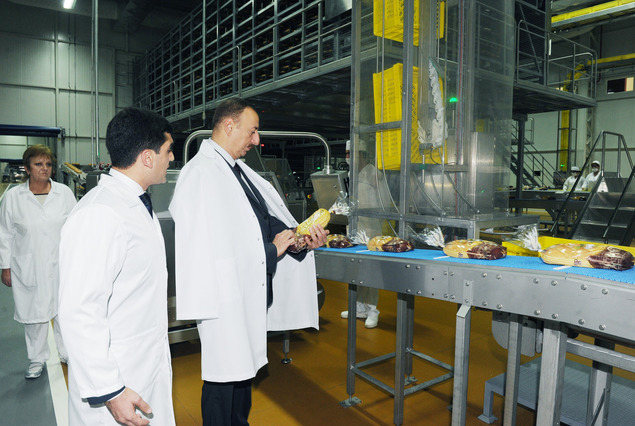
Various organizational-economic models of entrepreneurship development are applied in the leading countries of the world. One of these models is special economic zones. Its overall goal is to support the acceleration of the development of priority areas of the country’s economy, creation of more available conditions to attract domestic and foreign investment, introducing new competitive manufacturing and service areas on the basis of the special legal regimes and modern technology.
The appropriate tasks are also carried out in order to apply new organizational-economic models — special economic zones, industrial city, and creation of agro parks of entrepreneurship development in Azerbaijan.
The Agency for Development of Small and Medium Businesses was established under the Decree of the President of the Republic of Azerbaijan dated 28 December 2017. The Agency’s objective is to support micro, small, and medium businesses development in the country. Also, it provides a number of services to businesses, coordinates and regulates the services of government agencies in this area.
Currently, measures are taking systematically and consistently in the country to expand entrepreneurship and increase its role in the economy, to further improve the business and investment climate. According to new economic conditions, reforms are applied to support the private sector and protect the rights and interests of entrepreneurs. Following the international experience, mechanisms meeting modern challenges are applied for the development of this field. As a result of state support measures for entrepreneurship, the number of business entities has increased five times over the past 17 years, the share of the private sector in GDP exceeded 85 percent, and its share in employment exceeded 76 percent.
Currently, The Republic of Azerbaijan has more trade relations with more than 170 countries.
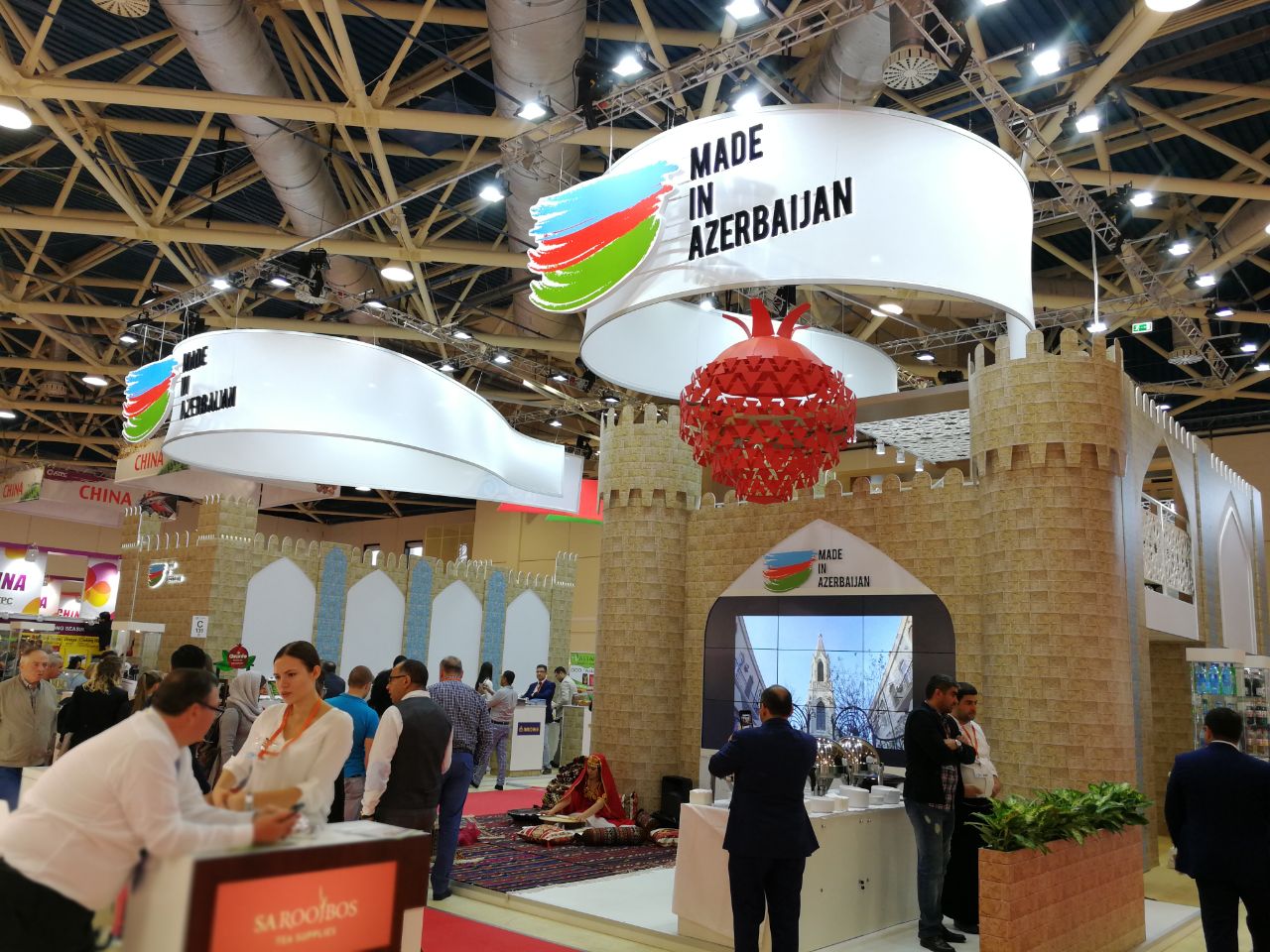
The Azerbaijan Export & Investment Promotion Foundation (AZPROMO) was established in 2003 to fulfill such priority tasks as boosting the country’s export potential and attraction of foreign investments. The Foundation strives to enhance the export potential of domestic entrepreneurs, ensures expansion of investment opportunities, and assists entrepreneurs in finding potential partners and implementing joint projects. To this end, the Ministry of Economy of the Republic of Azerbaijan, and the Azerbaijan Export & Investment Promotion Foundation (AZPROMO) implement important economic events both in the country and abroad, including business forums, exhibitions, workshops, and conferences. These measures play an important role in both improving the country’s business environment and economic potential and ensuring the development of business ties of local entrepreneurs. The practice of holding events in foreign countries renders positive results, especially in terms of increasing investments in priority areas of economic development. The practice of holding business forums in our country plays an important role in promoting the establishment of business ties with businesspeople of Azerbaijan, as well as providing their products with access to foreign markets, allowing for the conclusion of business agreements and development of their business ties abroad.
Foreign investors and local manufacturers can use AZPROMO’s legal advice to establish a business in Azerbaijan and enter foreign markets.
The Azerbaijan Export & Investment Promotion Foundation’s major areas of activity in the country are as follows:
Development of the country’s new image;
Provision of diverse services to local and foreign investors;
The attraction of investors and holding negotiations with them;
Creation of information base on investment and export opportunities;
Exploring the export potential of the Azerbaijani market in the area of regional trade;
Provision of consultancy and marketing research services to export-oriented companies;
Spreading the “Made in Azerbaijan” trademark internationally.

On 5 October 2016, President of the Republic of Azerbaijan Ilham Aliyev signed a Decree envisaging a large-scale promotion of local non-oil sector products in foreign markets under the brand name “Made in Azerbaijan”. This Decree covers 10 different mechanisms, i.e. implementation of support measures to promote the ‘Made in Azerbaijan’ brand abroad and stimulate exports.
Depending on specific support measures, the costs associated with their implementation shall be fully or partially covered by the state budget.
Every exporter of non-oil products of Azerbaijani origin has the right to benefit from these support measures.
One of the support measures is the export mission that promotion of the Made In Azerbaijan brand abroad and stimulation exports is the implementations.
Export missions are a support measure implemented to discover access to new markets as well as to strengthen the position of local products in existing markets and introduce new products to these markets.
Considering the export potential of non-oil sector products, exporters’ requests, international economic and trade relations of Azerbaijan, the Ministry of Economy defines the countries to be visited and the dates of the visits.
The state budget shall cover all logistic expenses related to the trip (hotel, transportation, rental of rooms, and equipment for business meetings, translation services). One of the support measures of the stimulation of exports is to investigate the market of local products in foreign countries.
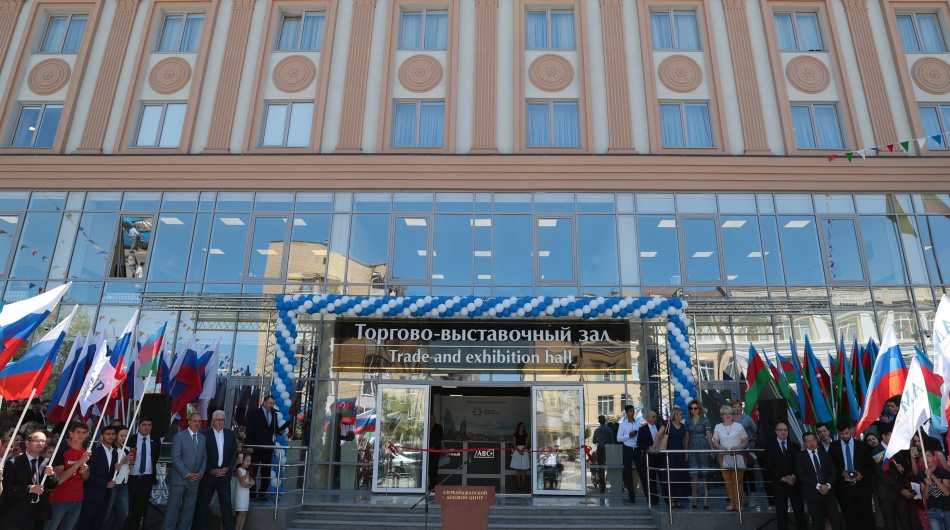
Market research is a support measure organized to explore and expand access to existing and new export markets to ensure the export of non-oil sector products.
Market research is carried out by specialized local or foreign legal entities or individuals selected as a result of competition on the basis of exporters’ requests in accordance with the target markets defined by the Ministry of Economy.
Currently, one of the measures of stimulation exports is close participation in international exhibitions and fairs. Participation in international exhibitions and fairs through a single country stand is a support measure organized to promote local non-oil sector products under the brand name “Made in Azerbaijan” The state budget shall cover all organizational logistic costs to ensure the participation in international exhibitions and fairs at a single stand (i.e., rental of space at the location of the exhibition/fair, design, preparation, and installation of the stand, transportation of products).
At the same time, various support measures are being taken for the promotion of the “Made in Azerbaijan” brand in public places abroad and in the international media in order to promote local non-oil products under a single name in the world.
BANKING SYSTEM IN AZERBAIJAN

The banking system is considered an important element of the financial system of Azerbaijan. Today banks leave behind other financial mediators for the volume of their assets and capital, as well as regional coverage.
Currently, there is a developed two-tier banking system based on market principles (the Central Bank of the Republic of Azerbaijan in the first tier, commercial banks, and other non-bank credit organizations in the second tier).
The Central Bank of the Republic of Azerbaijan was founded in 1992. The main mission of modern central banks is to maintain prices and financial stability.
The Central Bank performs a number of functions defined by law In order to achieve its goals.
The Central Bank’s main function is to set and conduct the country’s monetary and exchange rate policy. Monetary policy is conducted using a variety of tools. These tools include buying and selling securities issued by the state and the Central Bank, determining interest rates on loans issued by the Central Bank to banks, requirements for required reserves of banks, etc. Through these tools, the Central Bank uses opportunities to influence price stability, economic growth, as well as ensuring financial stability in the country by regulating the amount of money in circulation.
One of the critical functions of the Central Bank is to issue the national currency (manat) of the Republic of Azerbaijan. According to Article 19 of the Constitution of the Republic of Azerbaijan the Central Bank enjoys this exclusive right. Within this authority, the Central Bank issues manat denominated banknotes and coins to and withdraws from circulation, and takes actions on their circulation.
Determining the official exchange rate of the manat
The Central Bank sets an official exchange rate of manat against foreign currencies. The exchange rate is one of the factors affecting the country’s foreign economic relations. The Central Bank determines the official exchange rate of the manat, taking into account the average market rate. Economic institutions consider the official exchange rate when conducting foreign exchange transactions.
The Central Bank also performs the function of currency regulation and control. Foreign currency regulation and control is a set of measures that support the conduction of the exchange rate policy, maintain international settlements, regulate foreign currency circulation, execute transactions, restrict foreign currency use, and exercise government control over foreign currency movement.
The Central Bank actively uses gold and foreign exchange reserves to protect the exchange rate of the national currency and regulate the balance of payments. At the same time, the Central Bank acts as a guardian of the country’s gold and foreign exchange reserves entrusted to it, and at the same time performs the function of their management. Thus, gold and foreign exchange reserves currently play a stabilizing and “guarantor” role in international settlements. The Central Bank’s gold and foreign exchange reserves include gold, precious metals, and precious stones, foreign currencies, foreign currency funds held in the accounts of foreign central banks or other financial institutions, and other internationally accepted assets. The Central Bank gives information in the media on the total amount of gold and foreign exchange reserves managed by it at least once a quarter.
One of the functions of the Central Bank is to collect the country’s balance of payments statistics and compile a reporting balance of payments. The balance of payments is a statistical reporting system that shows indicators and reflection of the summary of economic operations (goods and services, investments) carried out by the population of the country and economic entities (enterprises and organizations) operating in Azerbaijan with foreign persons during a certain period. The balance of payments is used to calculate the GDP (gross domestic product) of each country.
The Central Bank develops the country’s consolidated (both public and non-public) foreign debt statistics and international investment balance, summarizes and disseminates data. This function was assigned to the Central Bank on the basis of the changes made to the Law of the Republic of Azerbaijan on the Central Bank of the Republic of Azerbaijan dated 20 October 2015.
External debt statistics and international investment play a special role in the formation of the international ranking of the national economy, as well as considers macroeconomic policy decisions. These statistics are formed on the basis of accounting of liabilities of the country’s institutions to institutions of foreign countries.
The Central Bank organizes, coordinates, regulates activities of, and oversees centralized interbank and other unlicensed payment systems as part of this function.
Currently, such systems include The Real-Time Gross Settlement System (AZIPS), The Low-Value Payments Clearing and Settlement System (LVPCSS), The Interbank Card Center (ICC). The Central Bank sets requirements for participation in these systems, including security requirements for participation, requirements for the sustainability of payment systems, and requirements for forms of payment documents.
Azerbaijan Deposit Insurance Fund was founded on 9 February 2007 with the decree of the President of the Republic of Azerbaijan, Ilham Aliyev, and started to its operation onAugust 12, 2007, The purpose of establishing the Deposit Insurance Scheme is to prevent the risk of losing money deposited by individuals and to ensure the sustainability and development of the financial and banking system whenever banks and local branch offices of foreign banks become insolvent. Azerbaijan Deposit Insurance Fund is regulated by the Trustee Board and by the Executive director based on the Law on Deposit Insurance.
According to the amendments made to the Law of the Republic of Azerbaijan “On Deposit Insurance” on December 18, 2020, the amount of compensation for protected deposits of individuals was increased from 30,000 to 100,000 manats.
Currently, 26 banks operate in the Republic of Azerbaijan.
AZERBAIJANI BANKS
List of banks:
AccessBank CJSC
AZ1065, Baku city, Tbilisi avenue 3
Tel: (+994 12) 490-80-10
E-mail: info@accessbank.az
AFB Bank OJSC
AZ1073, Baku city, I.Gutgashinli street, 112
Tel: (+994 12) 565-65-56
E-mail: info@afb.az
Azer Turk Bank OJSC
AZ1078, Baku city, J.Mammadguluzadeh street, 85; 192/193
Tel: (+994 12) 404-14-54
E-mail: atb@azerturkbank.az
International Bank of Azerbaijan OJSC
AZ1005, Baku city, Nizami street, 67
Tel: (+994 12) 493-00-91
E-mail: ibar@ibar.az
Azerbaijan Industry Bank OJSC
AZ1005, Baku city, Zarifa Aliyeva street, 3
Tel: (+994 12) 493-14-16
E-mail: info@asb.az
Bank Avrasiya OJSC
AZ1000, Baku city, Nizami street, 112B
Tel: (+994 12) 598-85-85
E-mail: info@bankavrasiya.az
Bank BTB OJSC
AZ1025, Baku city, Khatai district, Yusif Safarov street, 27
Tel: (+994 12) 499-79-95
E-mail: https://btb.az/
Bank Melli Iran Baku branch
AZ1025, Baku city, Nobel Avenue, 23
Tel: (+994 12) 598-90-05
E-mail: bank@bmibaku.az
Bank of Baku OJSC
AZ 1069, Baku city, Ataturk avenue, 42
Tel: (+994 12) 447-00-55
E-mail: office@bankofbaku.com
Bank Respublika OJSC
AZ1000, Baku city, Khagani street, 21
Tel: (+994 12) 598-08-00
E-mail: info@bankrespublika.az
Bank VTB (Azerbaijan) OJSC
AZ1008, Baku city, Nasimi district, Khatai avenue 38
Tel: (+994 12) 492-00-80
E-mail: info@vtb.az
Expressbank OJSC
AZ1130, Baku city, Yusif Vazir Chamanzaminli street, 134C
Tel: (+994 12) 561-22-88
E-mail: info@expressbank.az
Gunay Bank OJSC
AZ1001, Baku city, Zargarpalan street, 5, 4/87
Tel: (+994 12) 498-04-55
E-mail: info@gunaybank.com
Khalq Bank OJSC
AZ1065, Baku city, Inshaatchilar avenue, 22L, 494th block
Tel: (+994 12) 404-43-43
E-mail: mail@xalqbank.az
Kapital Bank OJSC
AZ 1014, Baku city, Fuzuli street, 71
Tel: (+994 12) 598 12 95
E-mail: office@kapitalbank.az
Mughanbank OJSC
AZ1052, Baku city, A.Rajabli street, 21 B
Tel: (+994 12) 564-20-35
E-mail: mail@muganbank.az
Nakhchivanbank OJSC
AZ7000, Nakhchivan city, Jalil Mammadguluzadeh street, 7
Tel: (+994 36) 550-41-00
E-mail: office@naxcivanbank.az
National Bank of Pakistan NBP Baku branch
AZ1025, Baku city, Nobel avenue, 9A
Tel: (+994 12)464-30-55
E-mail: info@nbp-baku.az
PAŞA Bank OJSC
AZ1005, Baku city, Yusif Mammadaliyev street, 15
Tel: (+994 12) 505-50-00
E-mail: office@pashabank.az
Rabitabank OJSC
AZ1010, Baku city, 28 May street, 33
Tel: (+994 12) 598-44-88
E-mail: rb@rabitabank.com
Premium Bank OJSC
AZ1110, Baku city, Hasan Aliyev street, 131A
Tel: (+994 12) 931
E-mail: info@banksilkway.az
TuranBank OJSC
AZ1073 Baku city, Ismayil bey Gutgashinli street 85
Tel: (+994 12) 510-79-11/22
E-mail: office@turanbank.az
Unibank KB OJSC
AZ1022, Baku city, Rashid Behbudov street 57
Tel: (+994 12) 498-22-44
E-mail: bank@unibank.az
Yapi Kredi Bank Azerbaijan CJSC
AZ1014, Baku city, J.Jabbarli street, 32/12
Tel: (+994 12) 497-77-95
E-mail: info@yapikredi.com.az
Yelo Bank OJSC
AZ1010, Baku city, Pushkin street, 30
Tel: (+994 12) 981
E-mail: bank@nikoil.az
Ziraat Bank Azerbaijan OJSC
AZ1065, Baku city, J.Jabbarli street, 40, Caspian Business Center, 9th floor
Tel: (+994 12) 505-56-15
E-mail: info@ziraatbank.az
INVESTMENT ENVIRONMENT

Innovation and investment policy play a crucial role in terms of achieving many successes in the state economy. Macroeconomic stability and economic growth, economic security, ensuring the competitiveness of the national economy, improving the living standards of the population, solving many socio-economic problems is the investment climate in the country are the important goals in terms of investment-oriented.
Azerbaijan became an attractive country in the world for investment. The creation of political and economic stability, favorable business and investment environment ensure the realization of any project. The current investment policy and successful business environment do not only attract local investors but also, attract foreign investors.
As a result of an improved business environment, equal rights and opportunities have been created for all investors. Also, strong protection policy and legislation in this area are attractive factors for investors.
The lack of government inspections such as taxes, human health, national security is supporting factors of the investment climate.
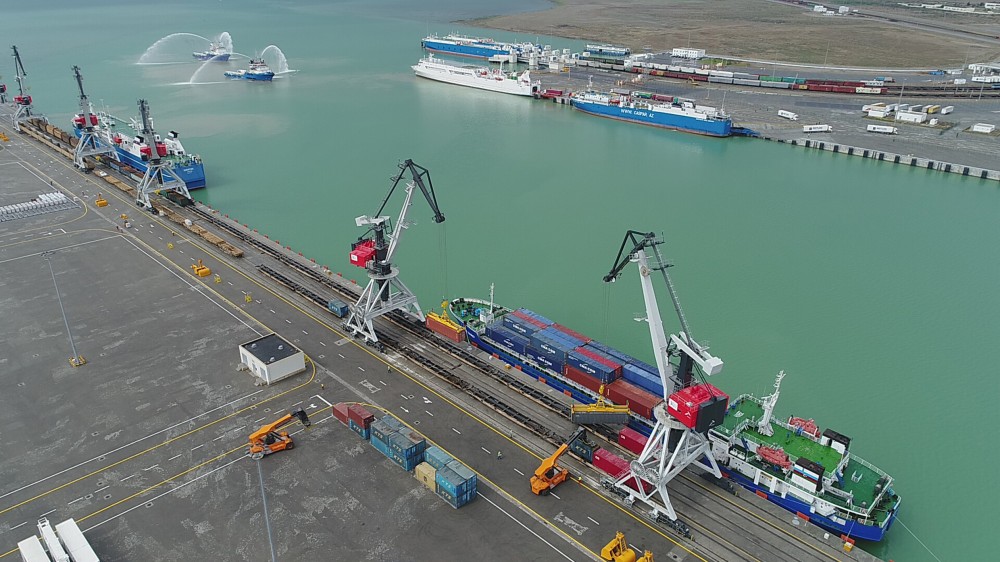
In addition, there is no discrimination against foreign and local investors. There are some favorable conditions for investors to create a favorable business environment. This favorable business environment includes a lack of requirements such as obtaining a permit for foreign investment and as well as lack of restrictions on foreign exchange, lack of license for foreign exchange transactions related to capital movements, and lack of restrictions on the amount of foreign capital in companies, the absence of restrictions on technology transfer and absence of legal restrictions on ownership, the absence of restrictions on the repatriation of profits and lack of the requirement of a local colleague.
As a result of works done in our country for the improvement of the investment climate, along with the number of companies investing in Azerbaijan, their geography is expanding. It is obvious that investors are only interested in investing in a stable country. So, the volume of investments in the Azerbaijani economy has now reached $ 280 billion.

Azerbaijan acts as an investor country in a number of regional and global projects. It led Azerbaijan to become a geopolitical actor, as well as a country with a growing international image.
Azerbaijan is one of the main initiators of billion invested in projects and the projects have been successfully completed. These projects include East-West”, “North-South” transport corridors, Baku-Tbilisi-Ceyhan oil, Baku-Tbilisi-Erzurum gas pipeline, one of the priority energy projects for the European Union (Shah Deniz-2, the expansion of the South Caucasus pipeline), Southern Gas Corridor.
The regional projects initiated by Azerbaijan such as the Baku-Tbilisi-Kars railway, the New Baku International Sea Trade Port, and the construction of a railway between Azerbaijan and Iran, show new achievements in the development of transregional infrastructure.
Azerbaijan strengthened its position as a major investor and become one of the leading countries in the CIS in terms of the volume of investments in foreign economies in the region. According to the reports of the world’s leading economic research centers, our country is characterized as a country that has become a geographical center of investment in the region.
Currently, work is underway to attract foreign investors to the liberated territories, and a number of countries are closely involved in the restoration of territories and the implementation of infrastructure projects.
TRANSPORTATION SYSTEM OF THE REPUBLIC OF AZERBAIJAN
The development of the transportation system plays a crucial role for the Republic of Azerbaijan.

Besides the infrastructures of state economy, such as energy, communication, education, and health care, the transport also plays an important role for achieving social, economic, foreign policy and other public priorities by ensuring initial demands of community life.
The dynamic development gained in all spheres of public life in our country in recent years increased significantly the geopolitical significance of our republic. Along with all of these, important tasks such as active participation in socio-economic processes in the global economic space, effective access to foreign markets, and the forming of a competitive national industry have become a necessity. The issues such as globalization, rapid integration and sustainable development etc. which are typical for modern era have also specific importance for our country.
Today, the transport sector has a special place in the rapid and comprehensive development of the country’s economy. This sector covers activities in the field of production, distribution and consumption of products and services. This sector has an undeniable role in all economic activities at the same time.
The expansion of economic connections among the countries of the world and the acceleration of integrative processes have confirmed that the transport system is one of the main pillars of the national economy of each country. Researchers who are engaged with clarification of the socio-economic nature of transport services proved that this system is an important condition for large-scale reproduction. From this view, during the large-scale radical reforms in the economy, it is significant to formulate and implement a policy that takes into account the specifics of transport, its role in economic and social processes. That`s why the sustainable development of the transport system requires a large amount of capital investment, the construction, and reconstruction of a large number of major transport hubs.

Currently, along with all spheres of life in the country, special attention is paid to the systematic and comprehensive development of the road industry. Consequently, today the renewal and modernization of the road industry of our republic are expanding and construction programs aimed at increasing the strength and power of our state, improving the welfare of our people are successfully continuing.
During the last years, all planned infrastructure projects and social programs in Azerbaijan were completed successfully. İn addition, projects such as the reconstruction of the road sector, construction of new roads, an overhaul of existing roads, which are important areas of social infrastructure, have been successfully continued. Numerous overpasses, bridges, tunnels, underpasses, and overpasses were built in the capital and regions.
Currently, Azerbaijan is implementing infrastructure projects to create the North-South and East-West international transport corridors. Work is underway to complete the following important projects to turn Azerbaijan into an international transport hub.
According to the report of the World Economic Forum, in terms of the state of roads, Azerbaijan ranking first in the CIS and has shown the highest result. Azerbaijan is ranked 10th on the Asian continent and 24th among 141 countries (2021).
Currently, in the liberated territories, work is underway to build road infrastructure.
The “Road to Victory” corridor extends from the Hajigabul-Minivan-Zangezur corridor to the city of Shusha that founded on November 16, 2020. The length of the road is 101 kilometers. Zangilan-Horadiz highway which is another important project and has great strategic importance, construction process continues. The total length of this road is 124 kilometers and consists of 4-6 lanes. The construction of the Hadrut-Jabrayil-Shukurbayli highway also started. The beginning of this road starts from Hadrut settlement of Khojavend region and passes through Shukurbayli village and Jabrayil region. The length of the road is 43 kilometers. One of the road infrastructure projects implemented in the liberated areas is the Barda-Agdam highway. This road starts from the city of Barda. The length of this road, called Barda-Agdam, is 44.5 kilometers. One of the road infrastructure projects implemented in the liberated areas is the Khudaferin-Gubadli-Lachin and Khanlig-Gubadli highways.
The length of the Khudaferin-Gubadli-Lachin highway will be 66 kilometers. This road will be separated from the Khanlig settlement and a new 17-kilometer highway will be built in Gubadli. The total length of the designed roads is 83 km.
In addition, the 29-kilometer-long Tartar-Chayli-Sugovushan-Talysh highway was restored.

Railways are one of the important areas of the developed transport system in our country.
Currently, our republic, located in a favorable geographical area, is actively involved in the implementation of all international and regional projects.
In recent years, intensive work has been done to improve the railway transport system in terms of its expansion, modernization, and renewal of the railway with international standards. This process aimed to improve the country`s railway network. Therefore, Azerbaijan’s active participation in the implementation of international and regional transport corridors, Baku-Tbilisi-Kars and North-South projects has also been ensured.
Currently, restoration of the railway netwrok in the liberated territories continues.
The 100-kilometer Horadiz-Agband railway will play an important role in accessing the liberated territories. At the same time, this railway will allow for the establishment of a direct railway connection between the main part of Azerbaijan and the Nakhchivan Autonomous Republic through the Zangazur corridor.
In addition, the 45-kilometer-long Barda-Agdam railway reconstructing again.
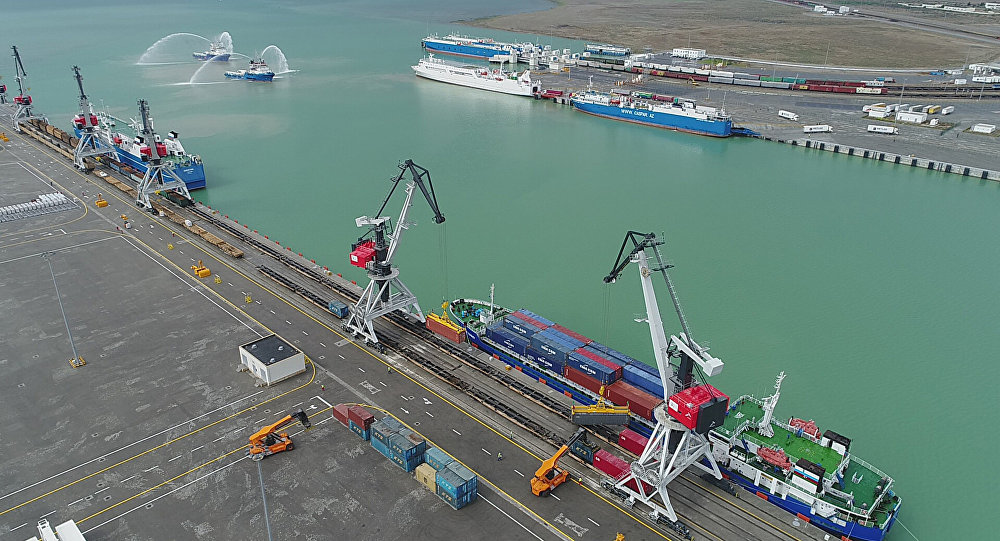
It is impossible to imagine international economic relations without the participation of maritime transport. Comparing with other roads, maritime transport is the cheapest transport system.
In order to get advantages from maritime transport, investments are being made in a number of countries around the world. The Baku International Sea Trade Port started its operation in 2018. Along with port operations in Azerbaijan and abroad, the modernity and high carrying capacity of ships are some of the important contexts.
Currently, along with the transport fleet, Azerbaijan Caspian Shipping Company CJSC includes specialized fleet and ship repair plants. Our transport fleet consists of 51 ships, including 20 tankers, 13 ferries, 15 universal dry cargo ships, 2 Ro-Ro ships, as well as 1 technical ship and 1 floating workshop. The specialized fleet consists of 204 ships.
One of the important areas of the transport system is air transport. In the last years, 7 airports have been built or reconstructed in the country. Currently, there are six international airports (Baku, Nakhchivan, Ganja, Lankaran, Gabala, Zagatala) in the country. Yevlakh airport is a local airport in Azerbaijan. Currently, 3 more airports are planned to build in the liberated territories (Fuzuli, Zangilan and Lachin).
AZERBAIJAN-EURASIAN TRANSPORT HUB

In recent years, the reconstruction of the transport system in the country contributes to the development of the internal transport infrastructure as part of the purposeful policy of the state and turns Azerbaijan into a transport hub of Eurasia.
Restoration of the Great Silk Road
On the initiative of national leader Heydar Aliyev, an international conference dedicated to the restoration of the historical Silk Road was held in Baku on September 7, 1998, with the participation of 9 countries (Azerbaijan, Turkey, Georgia, Ukraine, Moldova, Romania, Bulgaria, Uzbekistan, Kyrgyzstan), 13 international organizations and 32 delegations. At the end of this conference, “the main multilateral agreement on International Transport for the development of the European-Caucasus-Asia corridor” was signed on the basis of the TRACECA program of the European Union, and the Baku Declaration was adopted.
In accordance with the provisions of the main multilateral agreement, it was decided to place the Permanent Secretariat of the TRACECA Intergovernmental Commission in Baku and the official opening took place on February 21, 2001. Thus, by contributing to the restoration of the historical Silk Road, Azerbaijan played an important role in determining the main development trajectory.
At present, Azerbaijan is a participant in the Silk Road Economic Belt project initiated by China. In December 2015, a memorandum of understanding was signed between the Government of the Republic of Azerbaijan and the Government of the people’s Republic of China on joint promotion of the establishment of the “Silk Road Economic Belt” within the framework of President Ilham Aliyev’s state visit to China.
 Baku-Tbilisi-Kars transport corridor connecting Europe and Asia
Baku-Tbilisi-Kars transport corridor connecting Europe and Asia
The Baku-Tbilisi-Kars railway, which was commissioned on October 30, 2017, is the restoration of the ancient Silk Road on steel highways, ensuring the unification of the Trans-European and Trans-Asian railway networks.
On February 7, 2007, an agreement was signed on the construction of the Baku-Tbilisi-Kars railway on the initiative of the President of the Republic of Azerbaijan Ilham Aliyev in Tbilisi. In November of the same year, the foundation of the railway line was laid in the Marabda settlement of Georgia. In July 2008, a groundbreaking ceremony of the Kars-Georgia border section was held in Kars. The 850-kilometer part of the Baku-Tbilisi-Gars railway line with a total length of about 504 kilometers falls on the territory of Azerbaijan. 263 km of the railway line passes through Georgia, 79 km through Turkey.
The Baku-Tbilisi-Kars railway reduces the delivery time of cargo from China to Europe by more than twice compared to sea transportation. The Baku-Tbilisi-Kars railway, which serves stability and security, is expected to transport 5 million tons of cargo in the first stage, 17 million tons in the second stage, and then even more.
The construction of this project on the historical Silk Road increases its attractiveness for the countries of the region and at the same time facilitates the access of the countries of Central Asia — Turkmenistan, Kazakhstan, Uzbekistan, Kyrgyzstan, and Tajikistan, as well as Afghanistan to the European and world markets, which is of great importance in the development and integration of trade relations, economies.
One of the main elements of the Baku-Tbilisi-Kars project is that Azerbaijan, passing through the territory of Georgia, acquires a direct railway connection with Turkey, which serves to further strengthen relations between the two countries. Another issue is the extension of this project to the Nakhchivan Autonomous Republic. In the future, it is planned to lay a separate railway line from Kars to Nakhichevan.
In accordance with the instruction of President Ilham Aliyev, the free trade zone established in the Alat settlement of Garadagh district of Baku, including the territory of the Baku International Sea Trade Port, will be of particular importance in the transformation of Azerbaijan into an international transport hub. The Free Trade Zone will play a leading role in international cargo transportation and European-Asian logistics chains, as well as promote local production and provide exceptional service in the worldwide recognition of the “Made in Azerbaijan” brand. It is planned that the Free Trade Zone will serve on a regional scale a market that includes the South Caucasus, Central Asia, Iran, Russia, and Turkey and covers 130 million people.
North-South Transport Corridor connecting northern Europe with South Asia
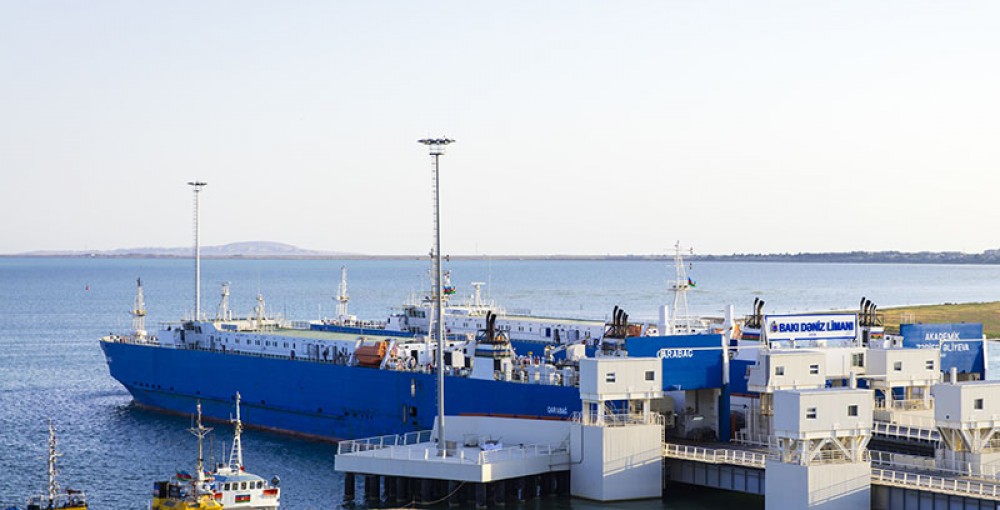
In accordance with the “strategic road map on logistics and trade development in the Republic of Azerbaijan”, Azerbaijan plays an active role in the creation of the North-South Transport Corridor. Thus, the country becomes an important transport logistics hub at the crossroads of both transcontinental corridors and in the center of Eurasian geography.
The North-South Transport Corridor will connect India, Pakistan, Iran, Azerbaijan, Russia, and Northern Europe.
Azerbaijan is the only country in the world that has a land border with Russia and Iran, and this geographical location is of great importance for the development of trilateral regional cooperation.
The process of establishing the Azerbaijani section of the North-South Transport Corridor has already entered the final stage. The railway from the Azerbaijani-Russian border to the Azerbaijani-Iranian border, which is an important part of this corridor, has been fully prepared for operation. Azerbaijan is also involved in financing the construction of the Astara-Rasht-Gazvin railway in Iran.
In the future, the North-South and Baku-Tbilisi-Kars transport corridors will be integrated. Azerbaijan is an active participant in both projects. Along with Azerbaijan, Georgia, Turkey, European countries, China, Kazakhstan, and other Central Asian republics will benefit from this.
At present, the process of transforming Azerbaijan into an international transport hub is going in the following important directions:
– Development of economic, trade, transport, and logistics relations between Europe, the Black Sea, the Caucasus, the Caspian, and Central Asia;
– Development of a multimodal corridor built on the shortest highway between China and the European Union;
– Construction of the North-South Transport Corridor;
– Reconstruction of Zangezur corridor;

– Attraction of transit cargo within the Great Silk Road;
– Thanks to significant improvements in logistics and trade infrastructure and regulatory incentives, Azerbaijan is becoming a more attractive hub in the region;
– Digitizing the Great Silk Road through Azerbaijan’s digital trade hub and TASIM projects;
– Coordination of relations between different transport areas;
– Adapted policy in the field of international and domestic tariffs on cargo and passenger transportation;
– Development of an adapted program of activities for the organization of multi-modal (combined) transportation, etc.
In recent years, the launch of new international airports in various regions of the country, the construction of new roads, and the role of leading regional projects in Azerbaijan contribute to the development of internal transport infrastructure as an integral part of Azerbaijan’s purposeful policy and turn Azerbaijan into a transport hub of Eurasia.
The victory of Azerbaijan in the second Karabakh War and the end of the conflict paved the way for new relations in the region. The trilateral statement signed on November 10, 2020, also included a provision on the construction of new transport links connecting Nakhchivan with the main territory of Azerbaijan. At present, active work is underway in the direction of the Zangezur corridor and the reconstruction of this corridor will be the next historical success of Azerbaijan.

